
I’m from Hong Kong, and knowing that the majority of our society members are from the UK, I’ve rarely been motivated to share my experiences about rail travel in Hong Kong. Afterall, compared to Hong Kong’s transport system, there’s endless things going on in Britain’s mammoth rail network — the grandeur of its ancient steam trains, the funny discussions regarding its post-war rail network (especially after the Beeching cuts), the never ending projects like Cross Rail (Purple Line/ Elizabeth Line/ Tfl Rail) and HS2, the heated debates around timetable reforms and re-nationalisation, and so much more.
As most of you might be aware of, Hong Kong, now under Chinese rule, was under British sovereignty prior to the 1997 handover. It is therefore no coincidence that many similarities can be drawn between its rail network and Britain’s.
Alongside many other things in Hong Kong, many parts of its rail network is or will be experiencing a large overhaul. Considering that electrification or the construction of various electrified railways occurred post-war in the 60s or 70s, similar to Britain, this is understandably the time for upgrades.
With this in mind, I present you with a brief history of the Hong Kong’s rail network (which could probably be better explained by Wikipedia anyways), and along the way, present a collection of photos I have taken during my trainspotting trips in Hong Kong.
Hopefully you would be able to draw some resemblances to Britain’s trains and network. Otherwise, just enjoy the photographs!
🔗 Note: I have embedded a number of links throughout the article, which are mostly Wikipedia articles on relevant topics. Feel free to have a read!
Peak Tram
The peak tram is the first mode of rail transport in Hong Kong, running between the Peak, mid levels and city centre. It runs on rails, but in fact it is a “funicular railway” with cable hauled vehicles.
It’s main purpose was to serve the elite residing on the Victoria peak, and today it is a tourist attraction in its own right. The track is just around 1.4km long, but it travels nearly 400m in elevation, via the peak’s mountainous terrain.
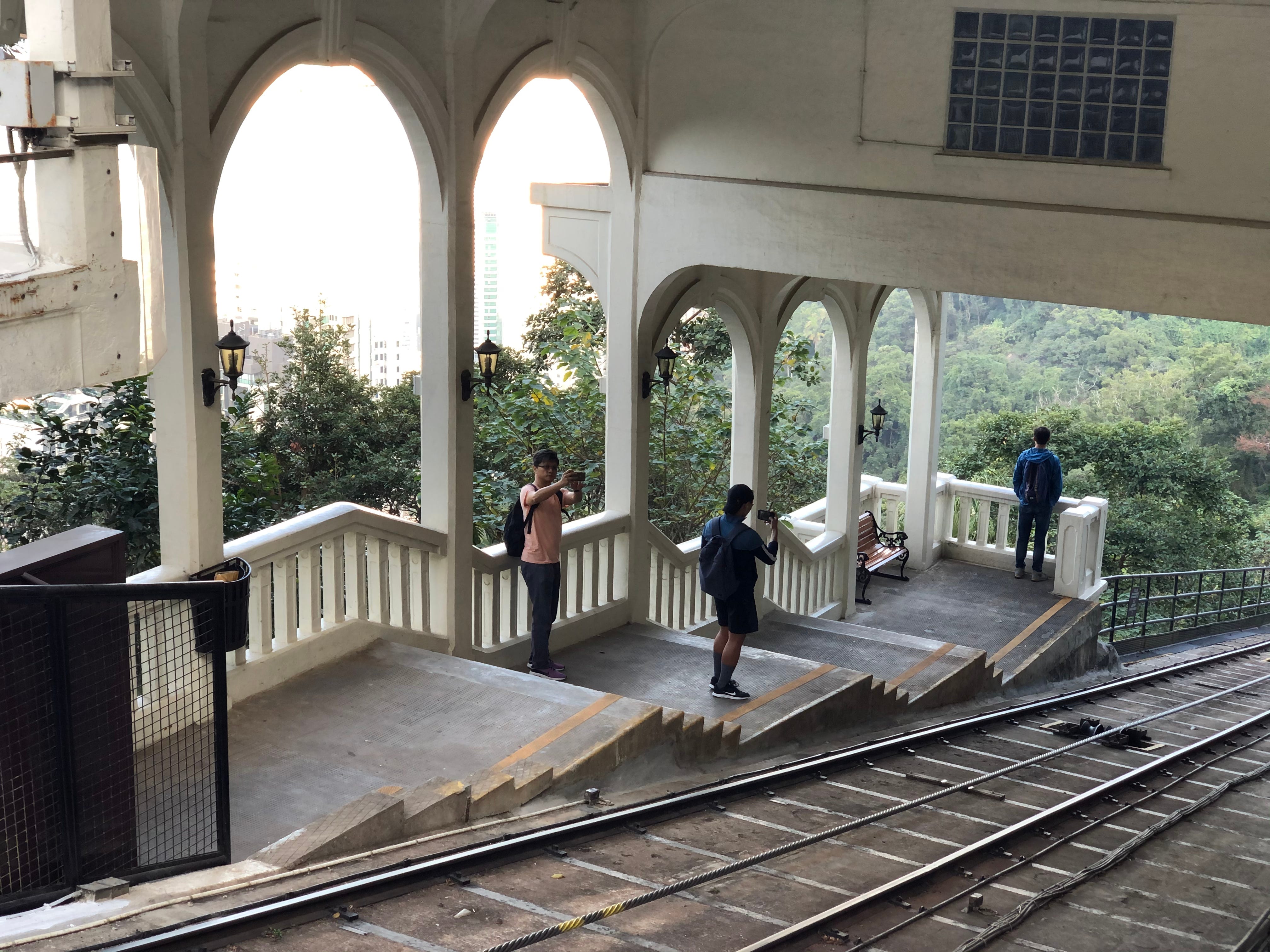
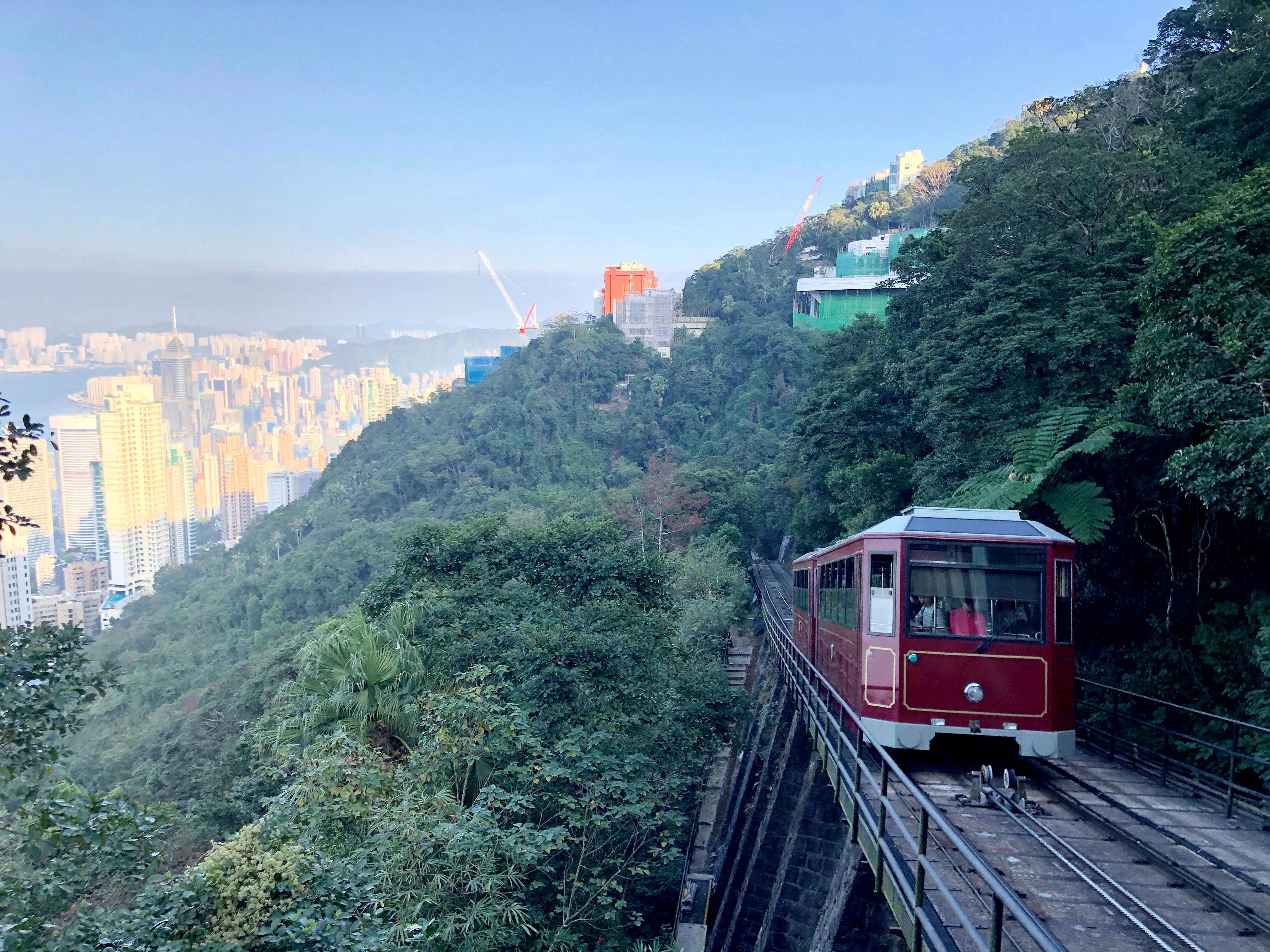
Hong Kong Tramways
The tram on along the North coast of Hong Kong Island in 1904, to meet the needs of the ever expanding city of Victoria.
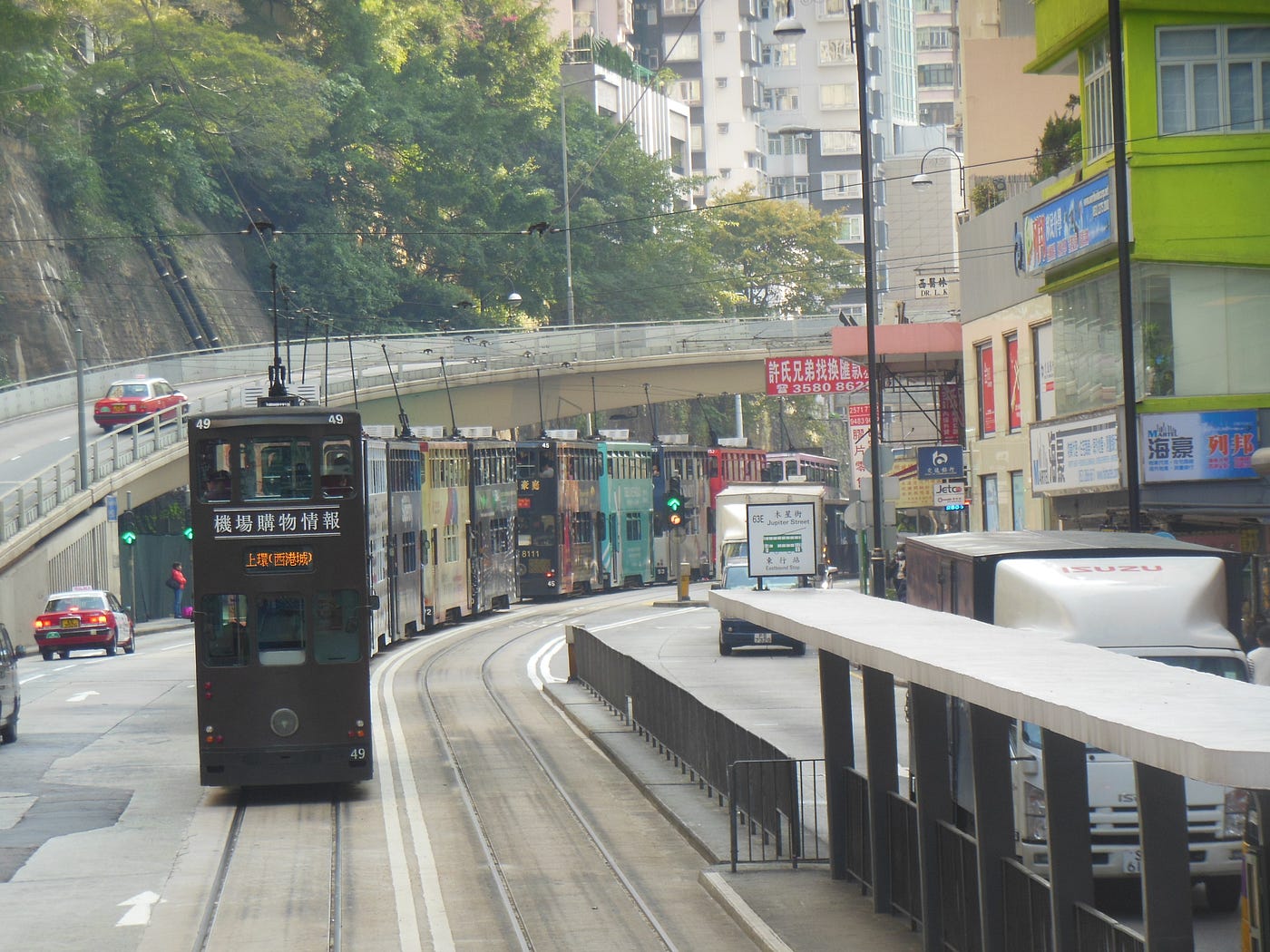
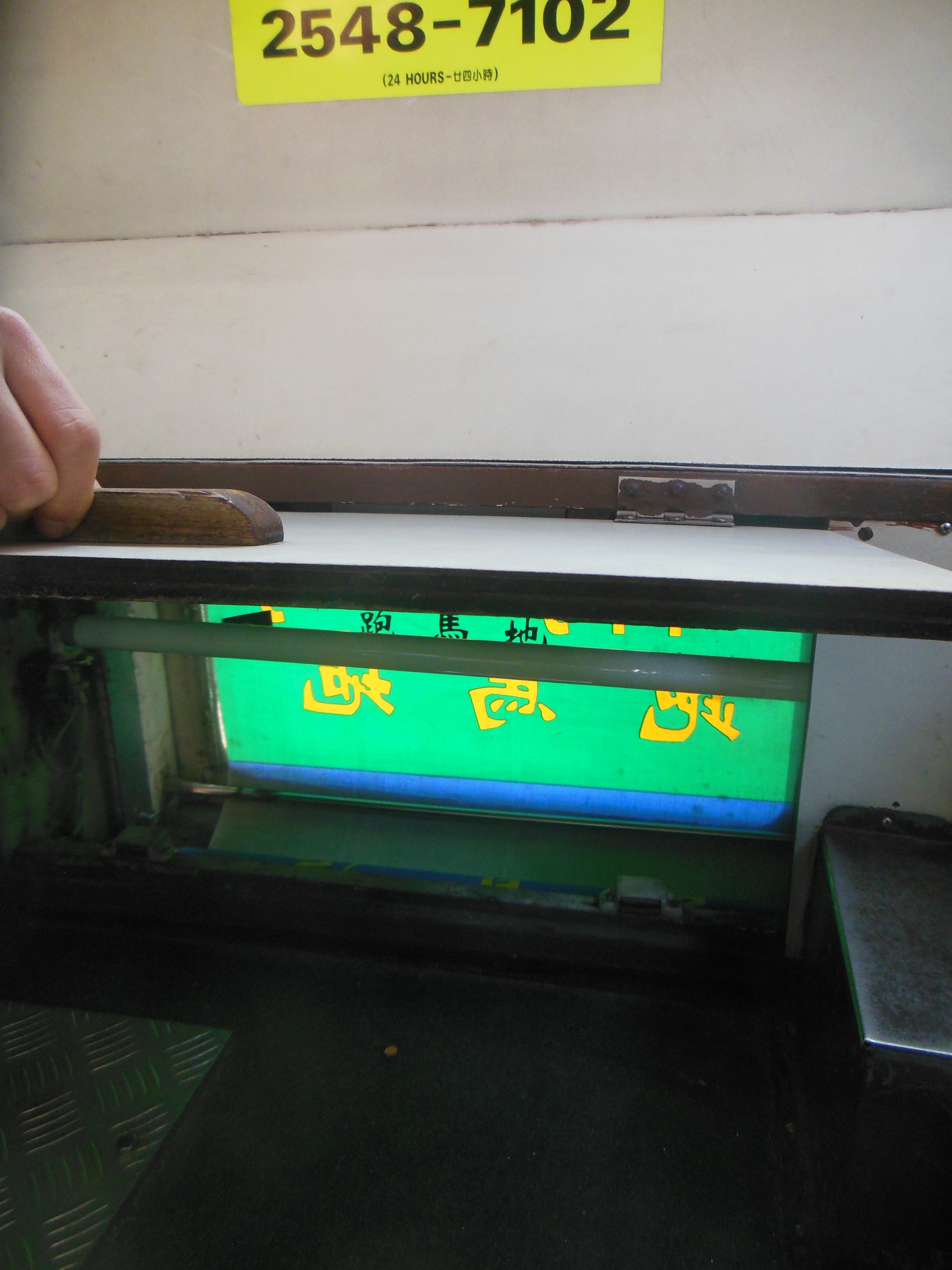
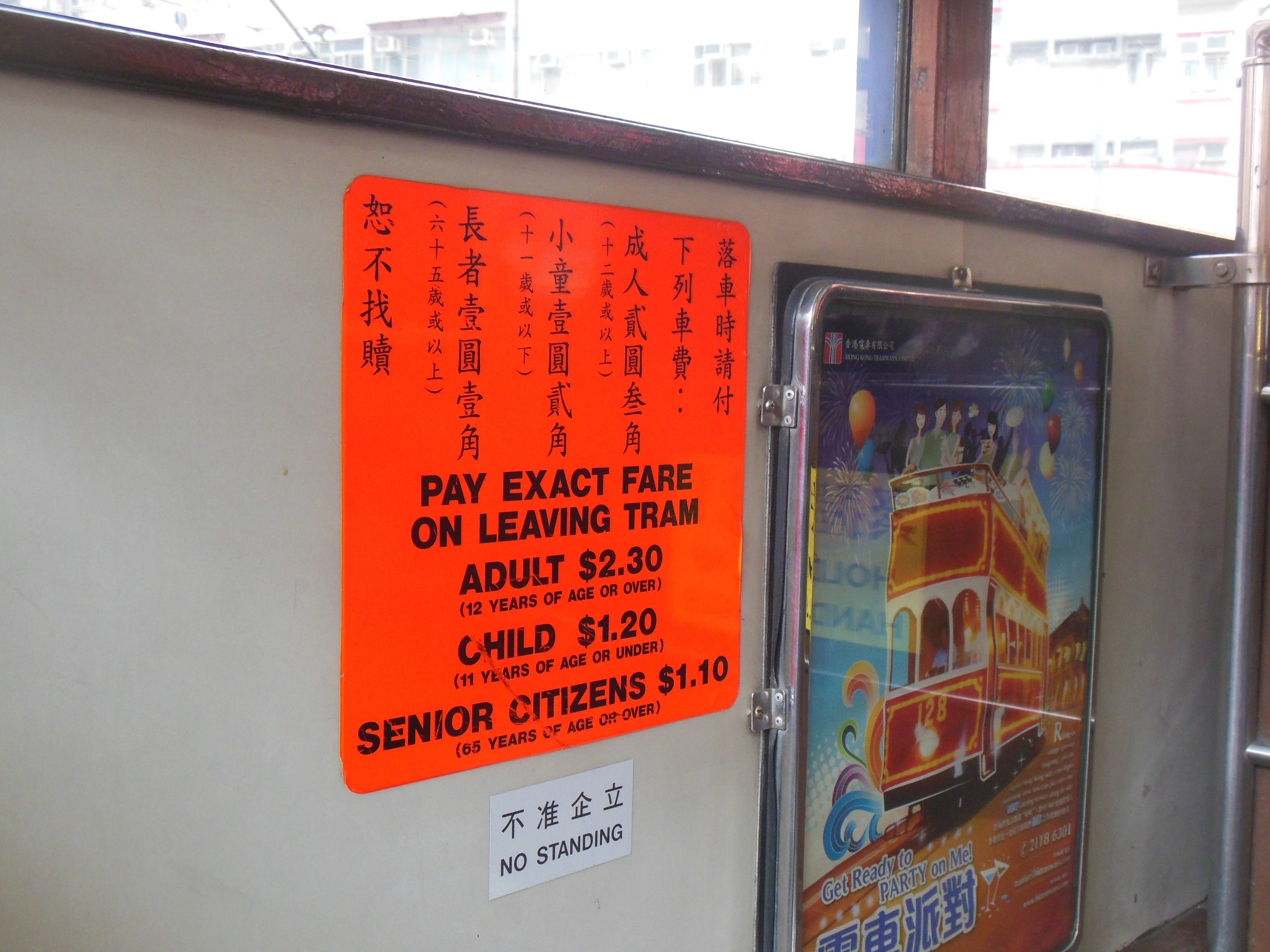
Looking at the photos of the Kingsway tramway subway, its double decker trams do bear quite a bit of resemblance to Hong Kong’s trams. A while ago the government attempted to replace the trams with near air-conditioned ones (charging higher fares), but there were a number of reliability issues. Currently the majority of the tram fleet are is still non air-conditioned, a rare sight in a city obsessed with air conditioners!
Luckily looks like these old trusty trams (or at least the classic double deck tramcar look), alongside their cheap fares, are here to stay.
Kowloon Canton Railway
The Kowloon Canton Railway (now the east rail line) was Hong Kong’s first “heavy” railway, opened in 1910, originally starting as a steam railway connecting Kowloon to the new territories of Shatin, Tai Po and Sheung Shui, and Canton (Guangzhou) in China. For the purpose of this story I will only be discussing about the British Hong Kong section. Initially it had a couple branch lines as well, which I will not discuss in this story.
The KCR initially operated as a suburban service, but today it’s a rapid commuter transit system, just like other lines of Hong Kong’s MTR.
Understandably I do not have my own photographs from that period. It was electrified in the 1970s, following the population growth in the New Territories’ “Satellite Towns”, such as Shatin and Tai Po.
It runs on quite a wide variety of trains:
- 🇬🇧 Metro Cammell EMUs (1982-, refurbished in 1996–1999) — 3/6/9/12 cars. They are set to head for the junkyards in a couple years 😢. It’s sad that we can’t send our trains to somewhere else in the country where there’s less demand for a frequent and reliable service, just like what BR did to the 1938 LU Stock and D-Stock on the Isle of Wight.
- 🇯🇵 Kinki Sharyo SP1900 EMUs (2001–2021, all units transferred to Tuen Ma Line) — 12 cars. Its train front is characterised by its cat-eye 😼 like headlights.
- 🇰🇷 Hyundai Rotem R-Stock (2021-) — 9 cars. Gradually replacing all the Metro Cammell EMUs on the East Rail Line.
The Kinki Sharyo EMUs SP1900 operate on the West Rail Line and Ma On Shan Line, which are also part of the KCR company prior to the merger of KCR and MTR in 2007.
I’m personally not really observant, but other enthusiasts find the motor noises of the Metro Cammells EMUs and the British Rail class 317s quite similar. Aesthetically though I think its hard to draw any comparisons, considering that the British EMUs produced in this period are mostly “boxy”.
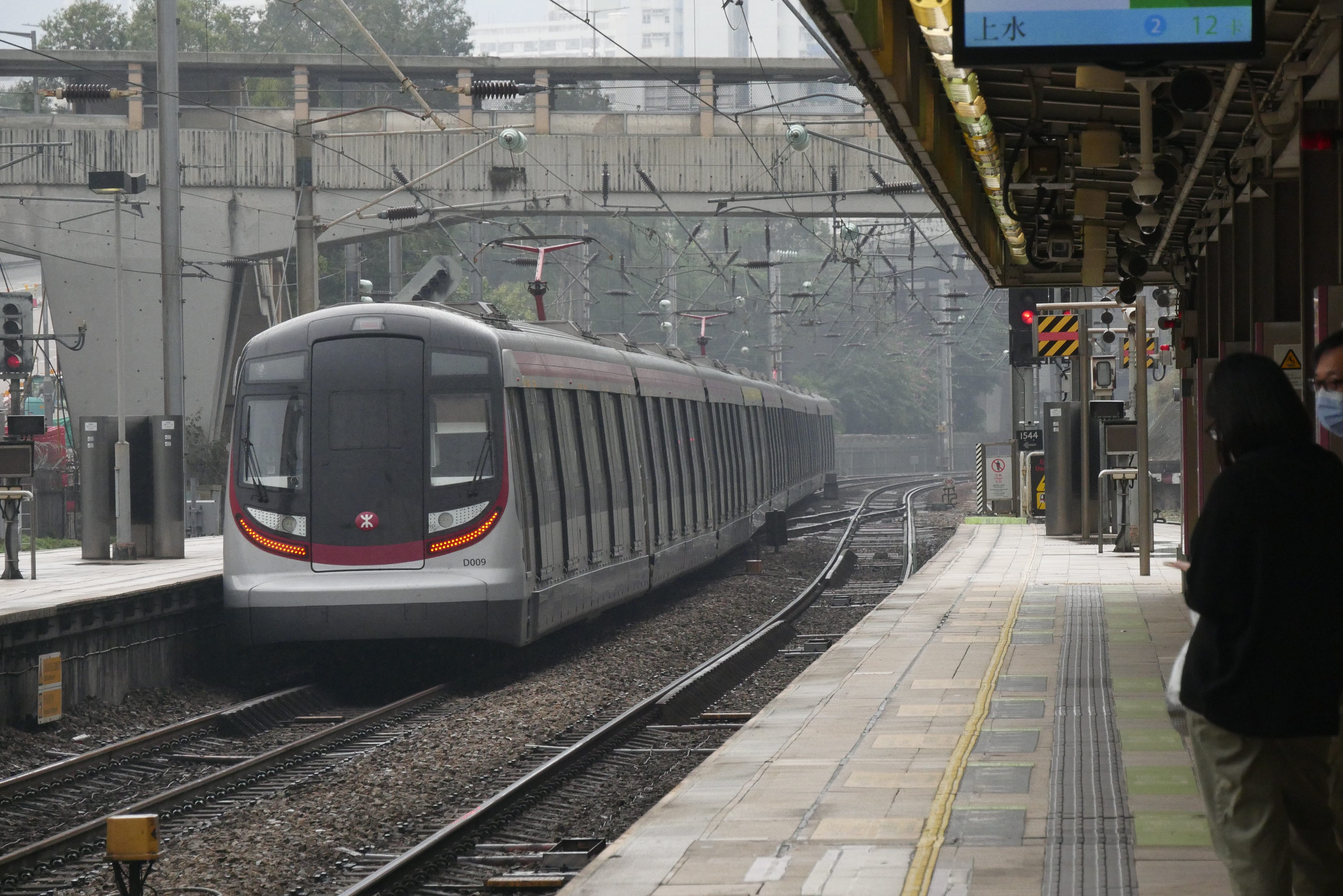
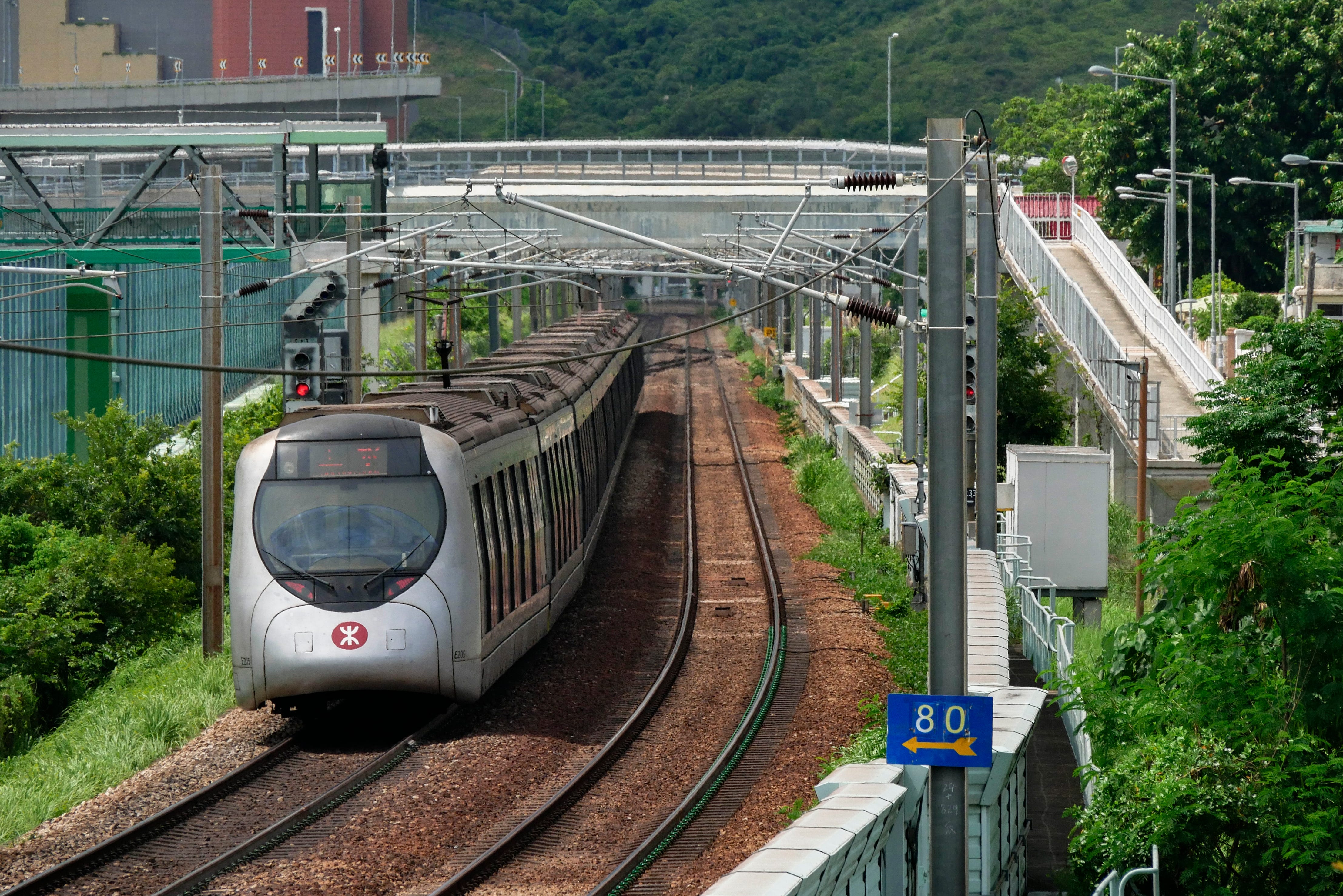
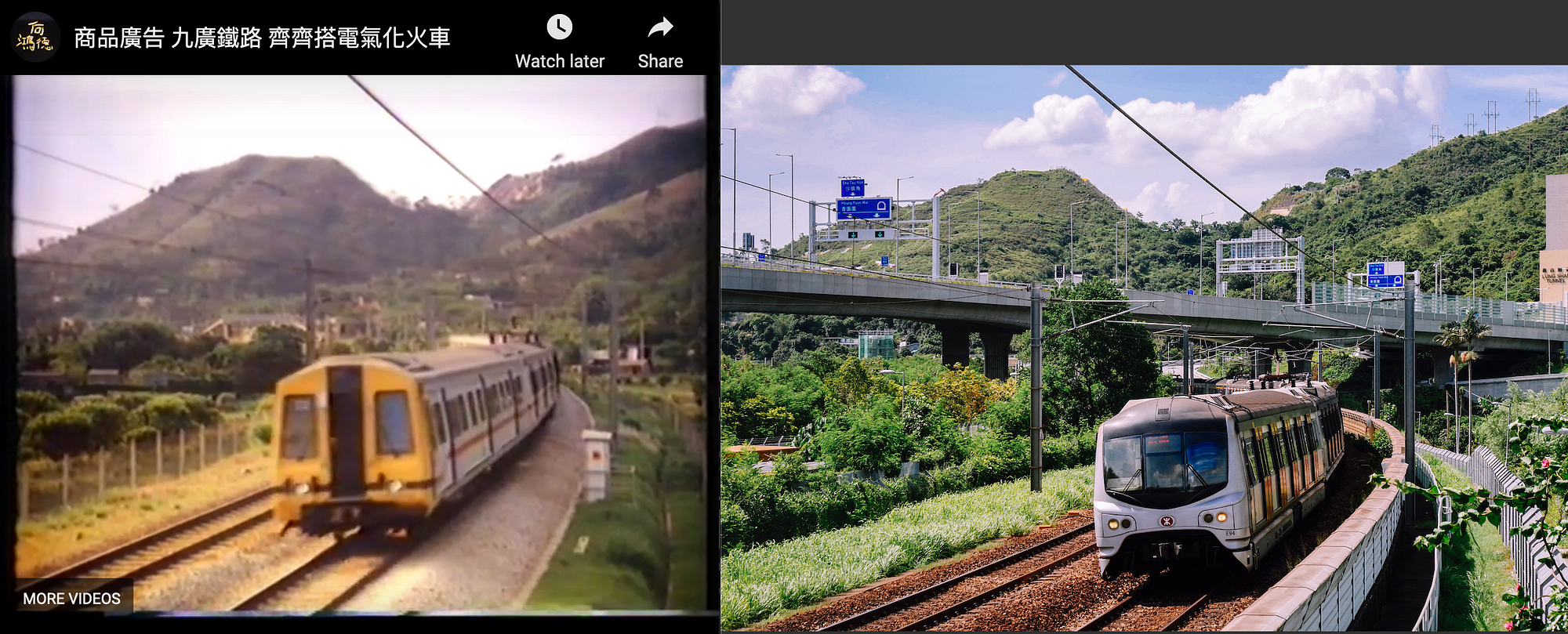
An interesting thing note is that the original variant of the Metro Cammells were dubbed “the yellow cab” for its yellow coloured cab (obviously). This is in line with Brtain’s legal regulations, where train fronts were required to have a yellow panel to make them more visible, a safety measurement when quieter and faster electrical trains were replacing their diesel or steam counterparts; this regulation was still in place in Britain up until 2016 or so.
Aside from the 🇯🇵 Kinki Sharyo EMUs SP1900, MTR has introduced the 🇨🇳 TML C-trains on the West Rail Line and Ma On Shan Line, which have a striking resemblance to the SP1900s in terms of its external appearance.
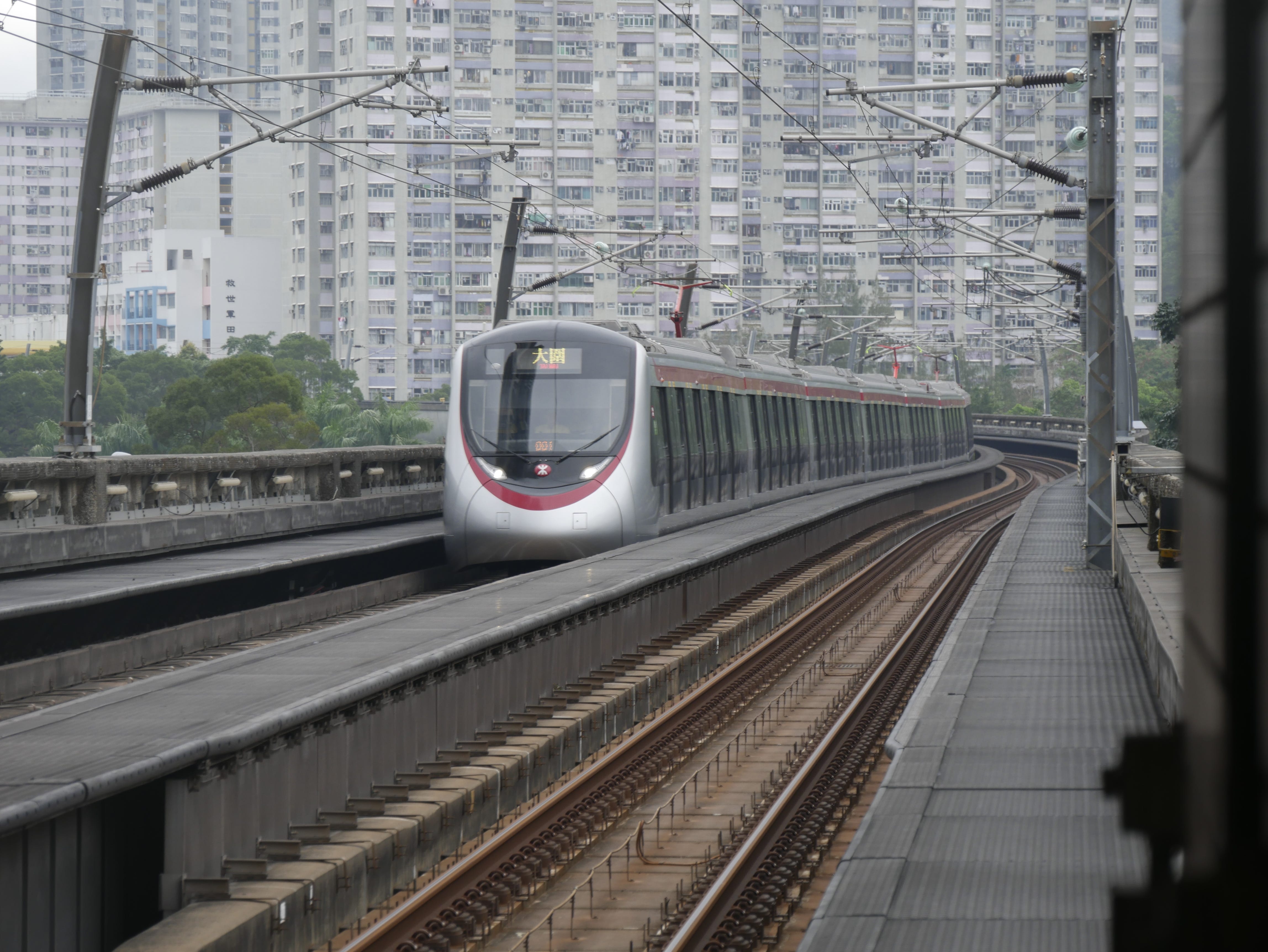
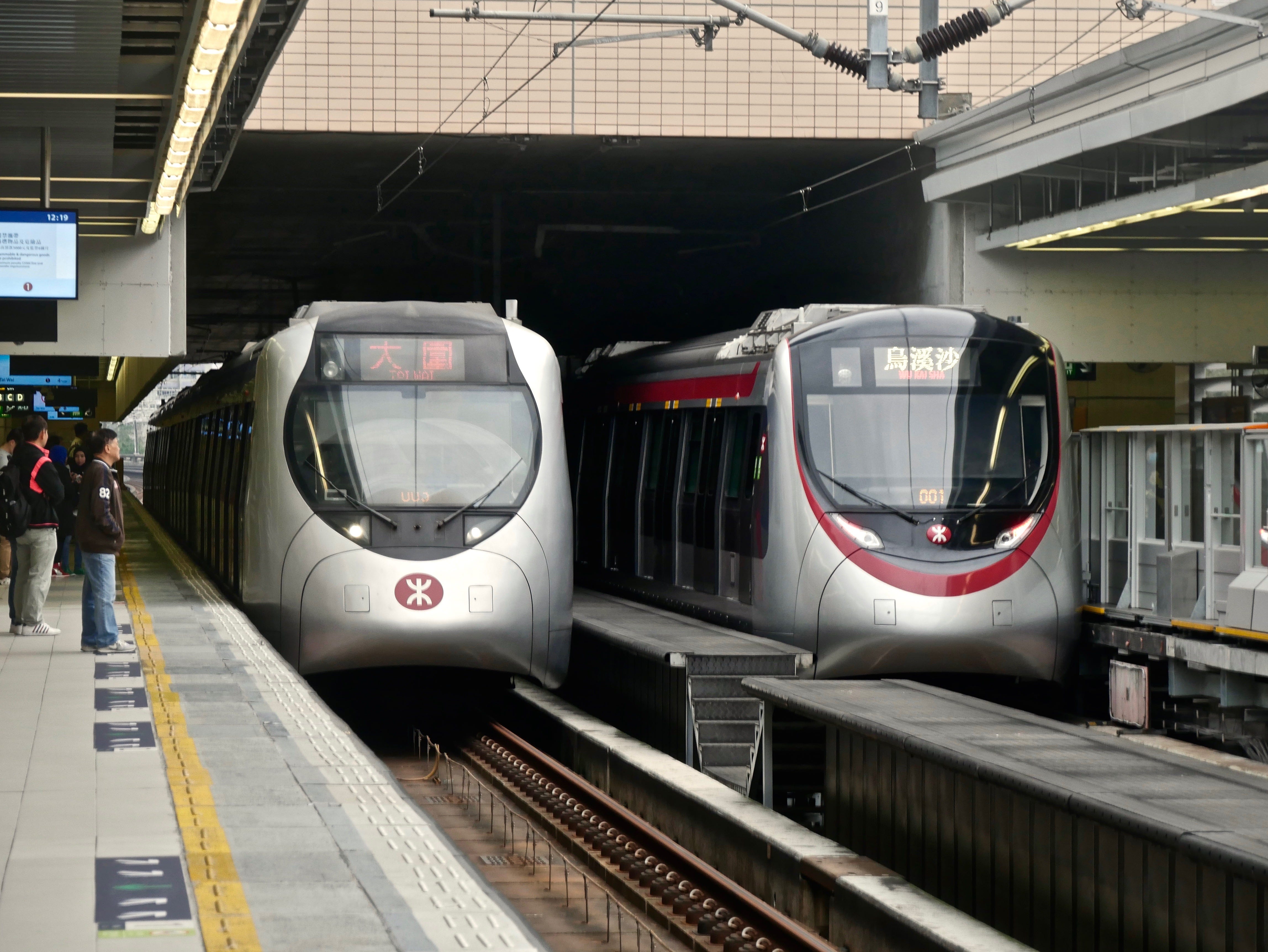
MTR
The MTR (Mass Transit Railway Company) is Hong Kong’s rapid transit system, opened in 1979. When it initially opened, it’s Chinese Name was “地下鐵路有限公司 (Underground Limited Company)”, and prior to its merger with KCR, it operated the “urban lines”, including:
- Kwun Tong Line (green), Tsuen Wan Line (red), Island Line (blue), Tseung Kwan O Line (Purple)
- Airport Express Line (dark green), Tung Chung Line (orange), Disneyland Resort Line (pink)
A couple other extensions were built after the merger, most notably the brand new South Island line (lime) in 2016.
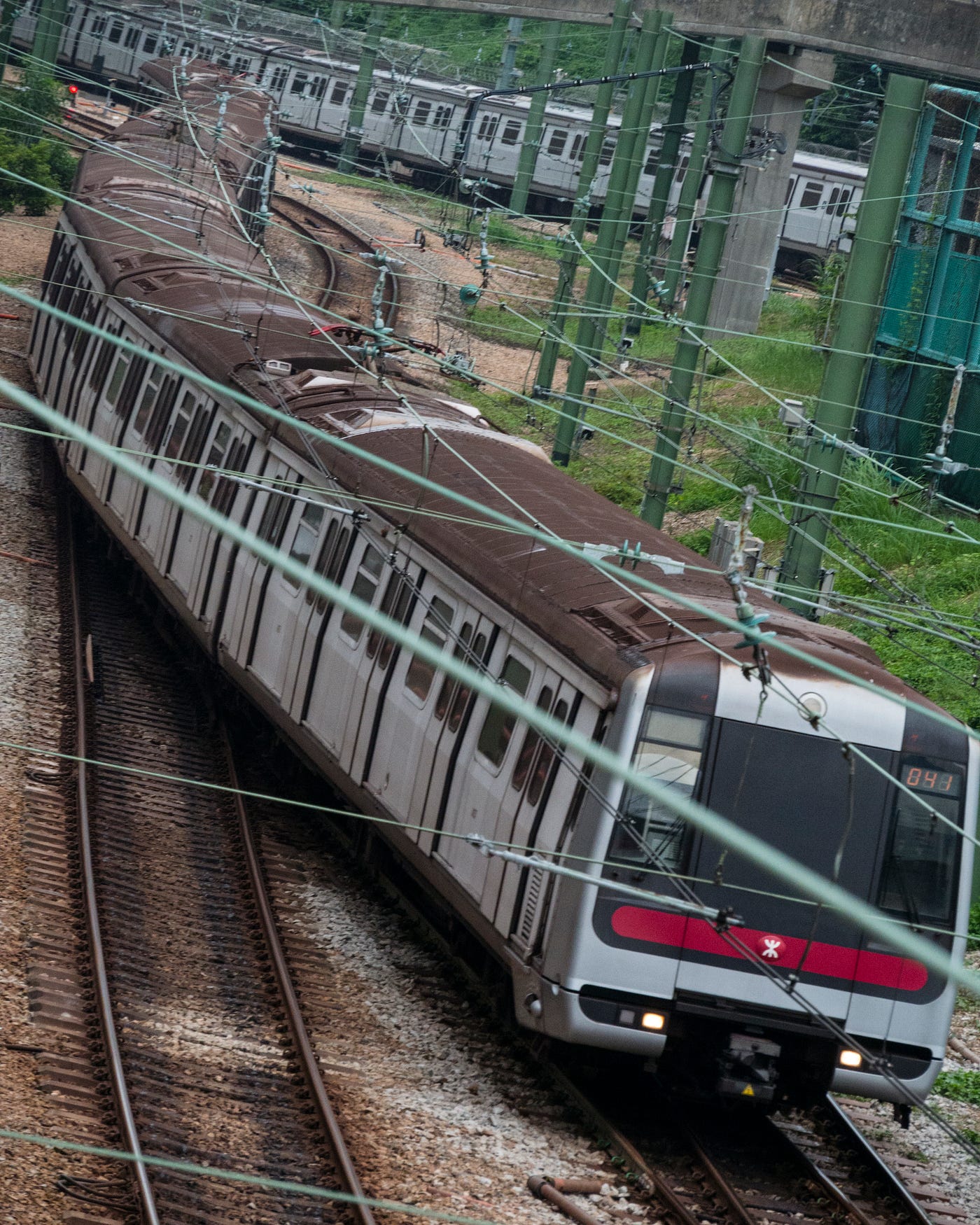
Excluding the rolling stock inherited from KCR, its rolling stock include:
- 🇬🇧 Metro Cammell M-Stock (1979-) — the entire fleet is about to be retired in favour of new C-stock (Q train) variants. Not quite sure about the Disneyland Resort Line variant though 🐭.
- 🇪🇺 Adtranz-CAF A-Stock (1998-)
- 🇰🇷 Rotem K-Stock (2002-)
- 🇨🇳 CNR Changchun C-Stock (2011-)
The company has portfolio of operating services overseas, including the UK. It owns a portion of the Southwestern Railway company, and is charged with operating Crossrail under the name “mtr crossrail”. Nevertheless, with re-nationalisation and de-franchisation in the air, I doubt whether MTR (or other operators as a matter of fact) would be granted further operations in the UK.
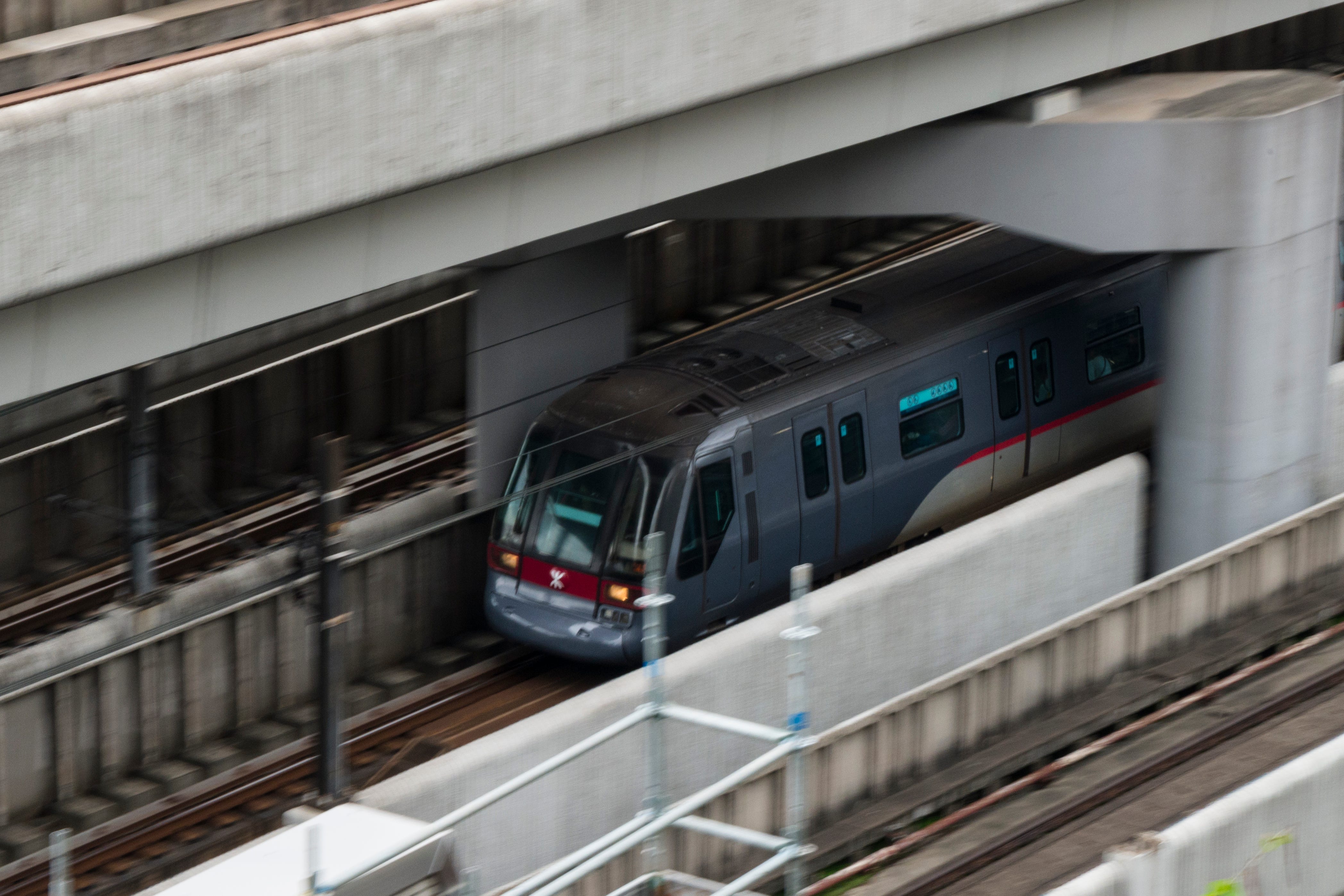
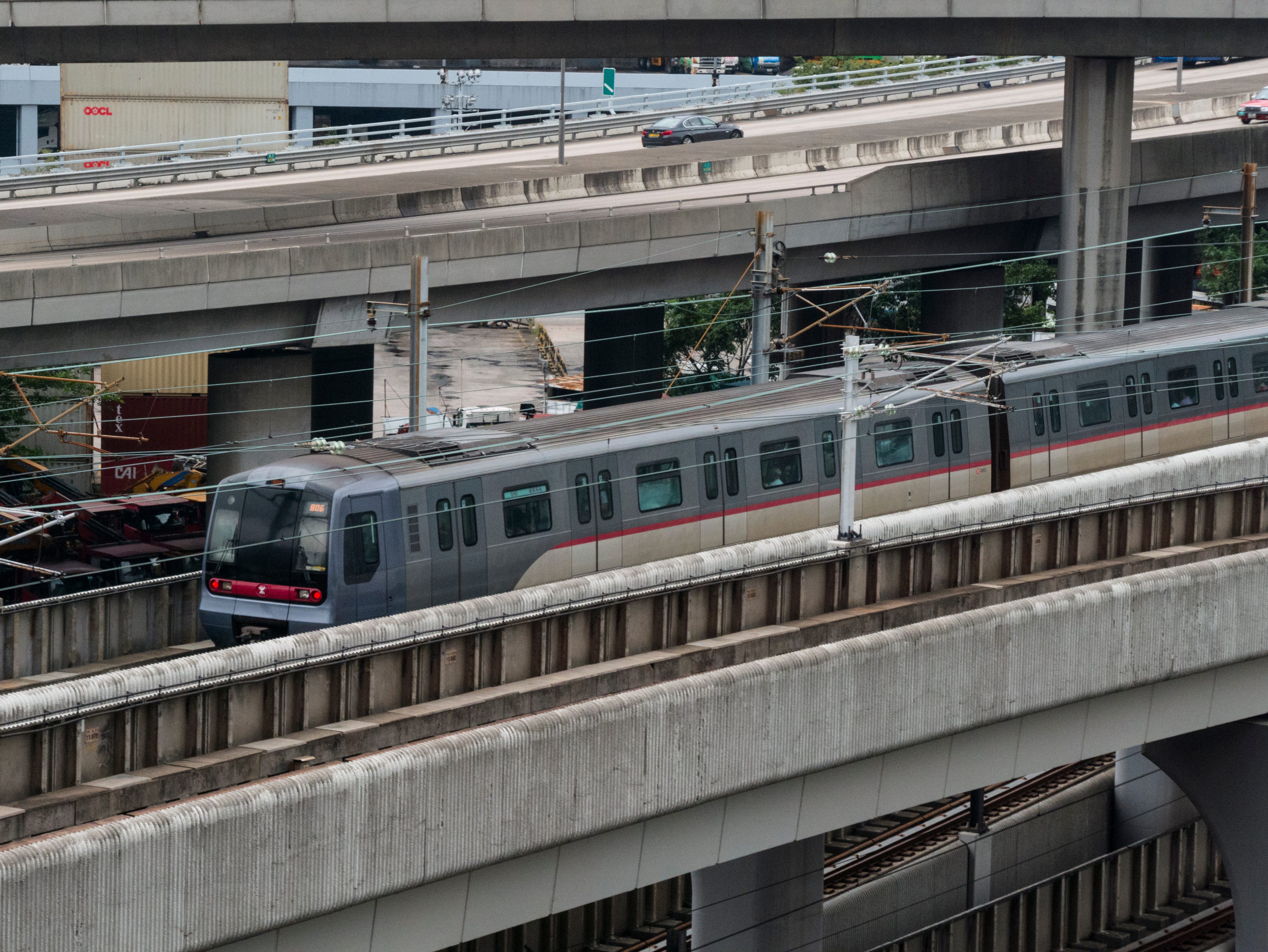
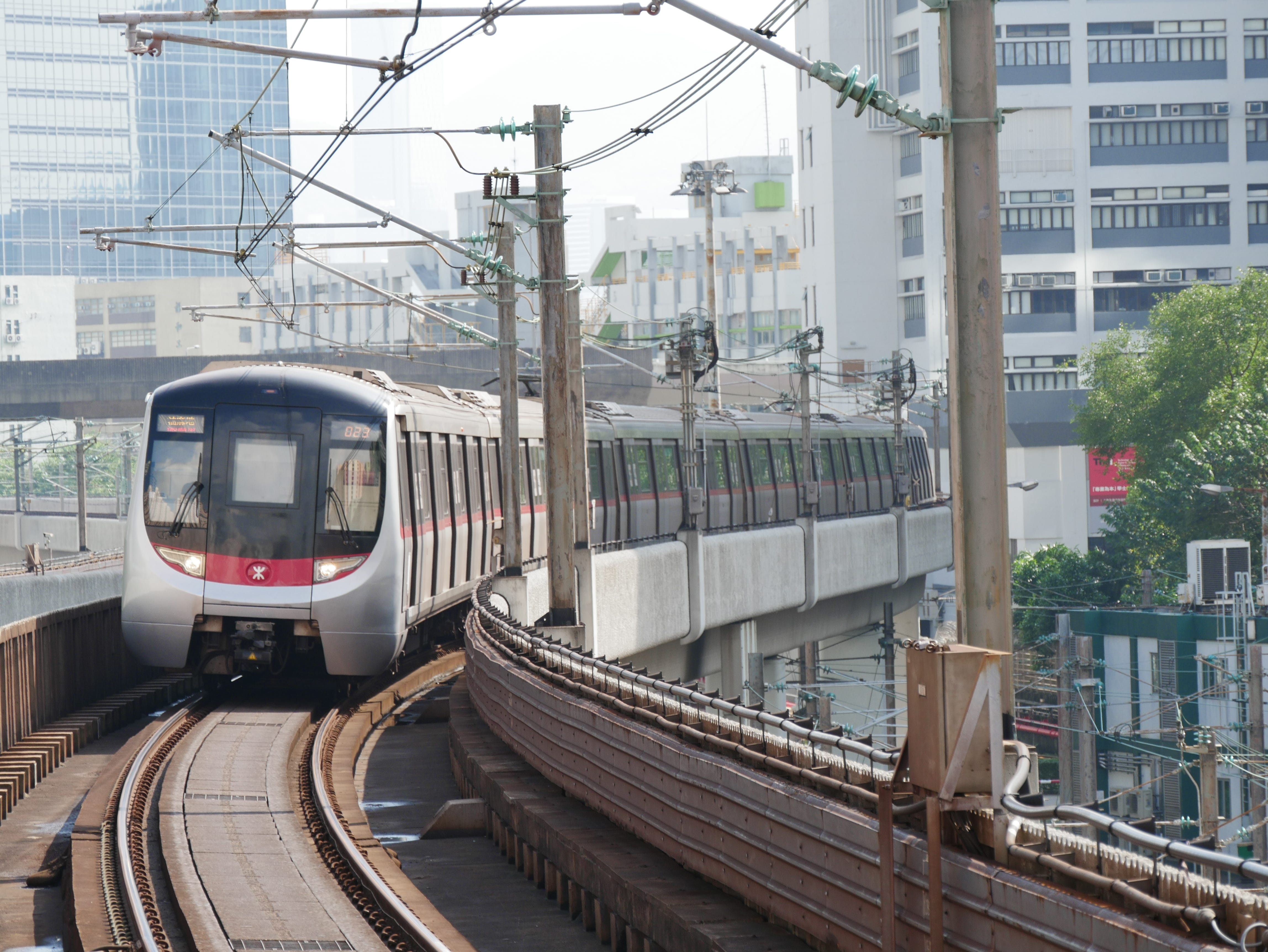
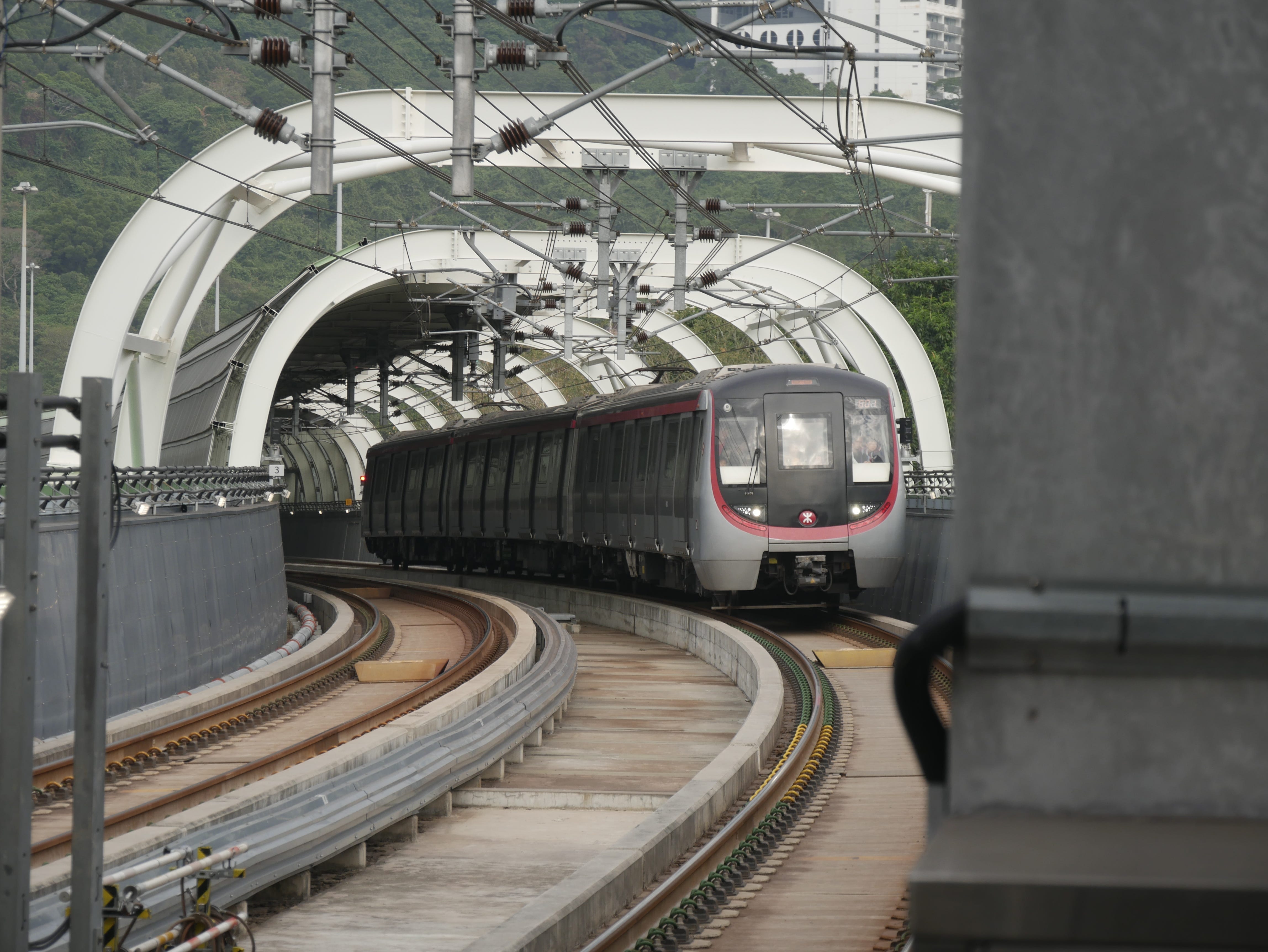
Light Rail Transit (LRT)
The Light Rail (links to an Aussie’s view of Hong Kong) operates in the Tuen Mun, Yuen Long, and later Tin Shui Wai new towns of New Territories West. Tuen Mun and Tin Shui Wai, in particular, were new towns designed with the light rail system in mind, so space was reserved along main roads.
Since its commencement in 1988, it has been met with a wide range of controversies, concerning:
- Safety — of a heavy light rail vehicle navigating tight bends, and sometimes crossing road junctions.
- Profitability — considering that it was replacing the mature bus network in the area, a low cost a flexible alternative
- Monopoly — The government introduced the “Light Rail Service Area”, banning all internal bus services in favour of the Light Rail. There were also boarding and alighting restrictions imposed on external routes.
- Practicality — In the old town of Yuen Long, the implementation of the LRT meant two lanes of traffic removed from its main road, causing congestion to this day. The SAR government is considering is currently considering relocating a section of LRT track in Yuen Long.
Its rolling stock portfolio is as follows:
- 🇦🇺 Comeng Phase I LRVs (1988-) — refurbished in 2011
- 🇯🇵 Kawasaki Phase II LRVs (1992-) — about to be scrapped
- 🇦🇺 UGL A Gonian Phase III LRVs (1997-)
- 🇨🇳 UGL-Nanjing Puzhen Phase IV LRVs (2009-)
- 🇨🇳 CRRC Nanjing Puzhen Phase V LRVs (2020-)
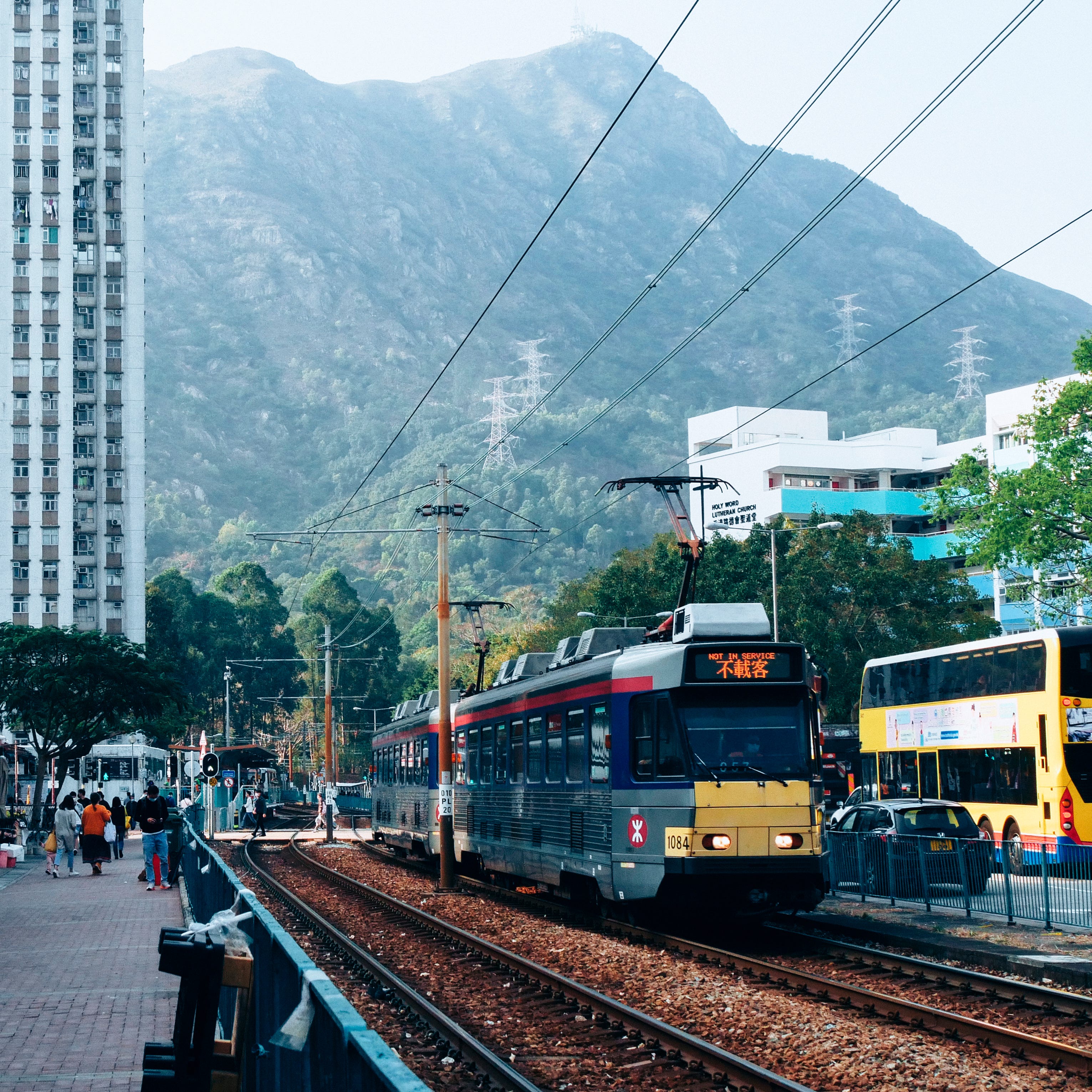
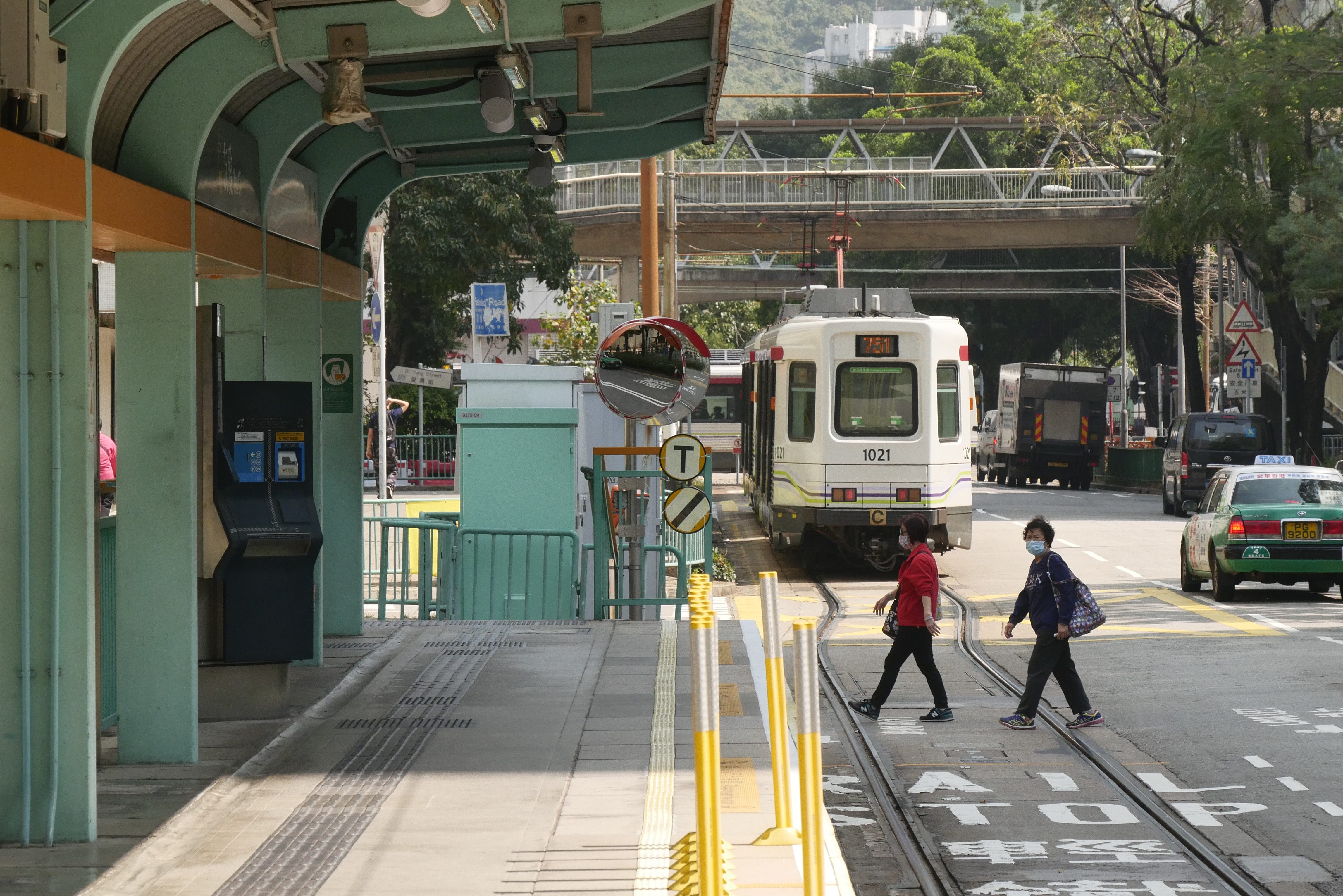
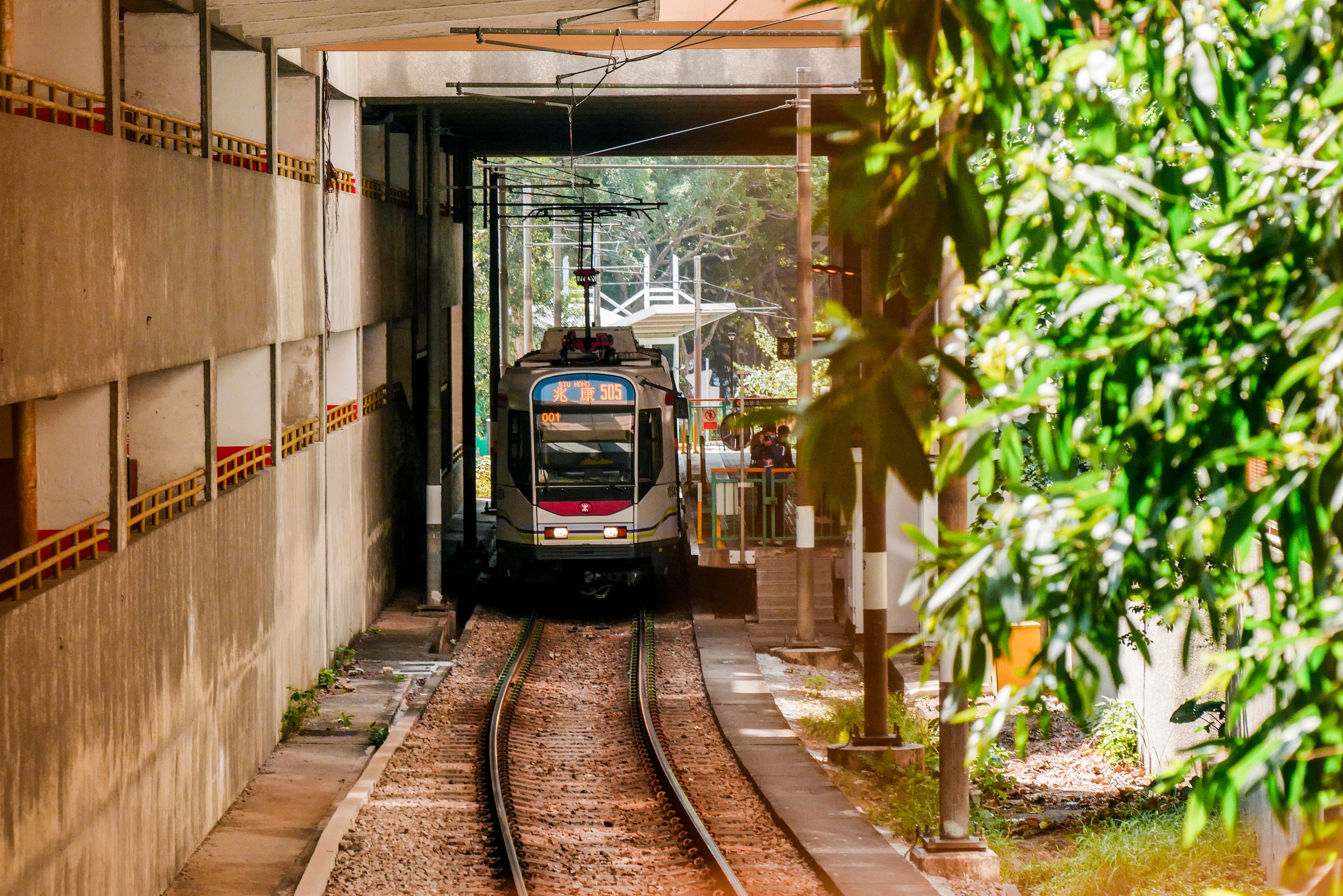
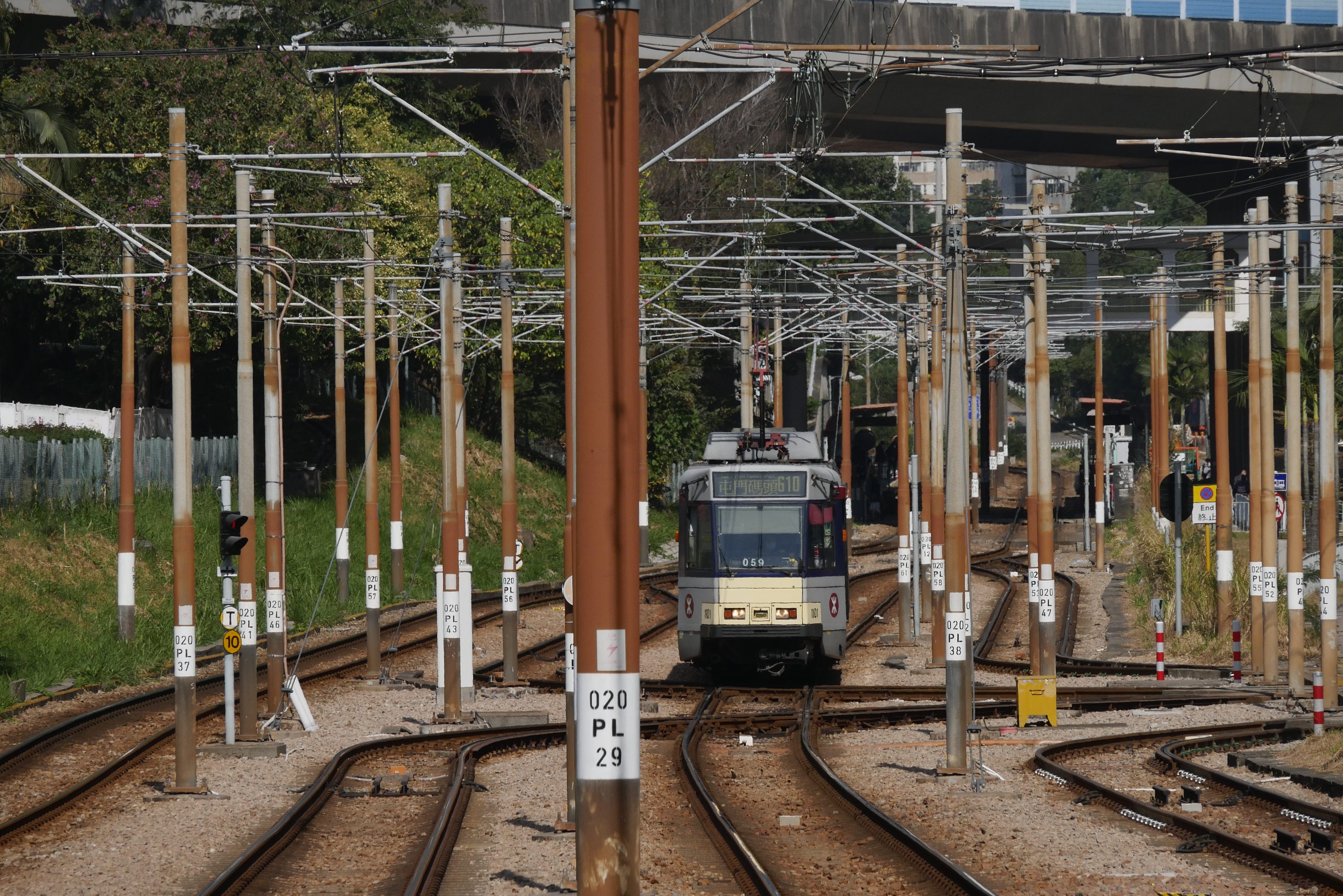
So here comes the comparisons. Oddly, the DLR commenced in 1987, 1 year prior to Hong Kong’s LRT. Like the DLR, the LRT runs on (decently heavy) 36 tonne vehicles. Unlike the DLR, the LRT has many road crossings, which makes its operational aspects more similar to tramlink. Unlike tramlink, the LRT requires a greater amount of the platform infrastructure due to the non low-floor design. Similar to the both systems, LRT stops are unmmaned, which makes the system prone to issues like vandalism and fare evasion.
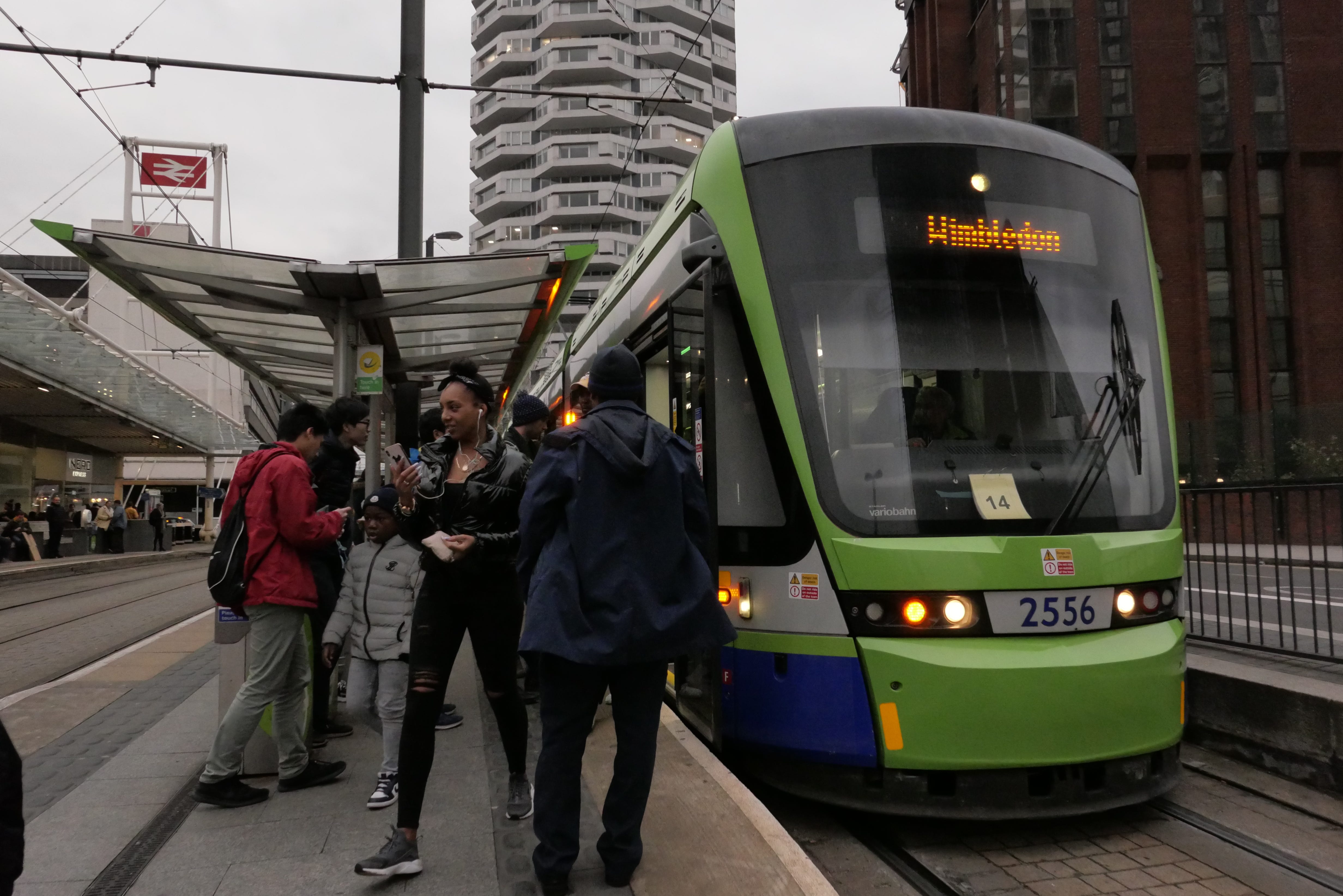
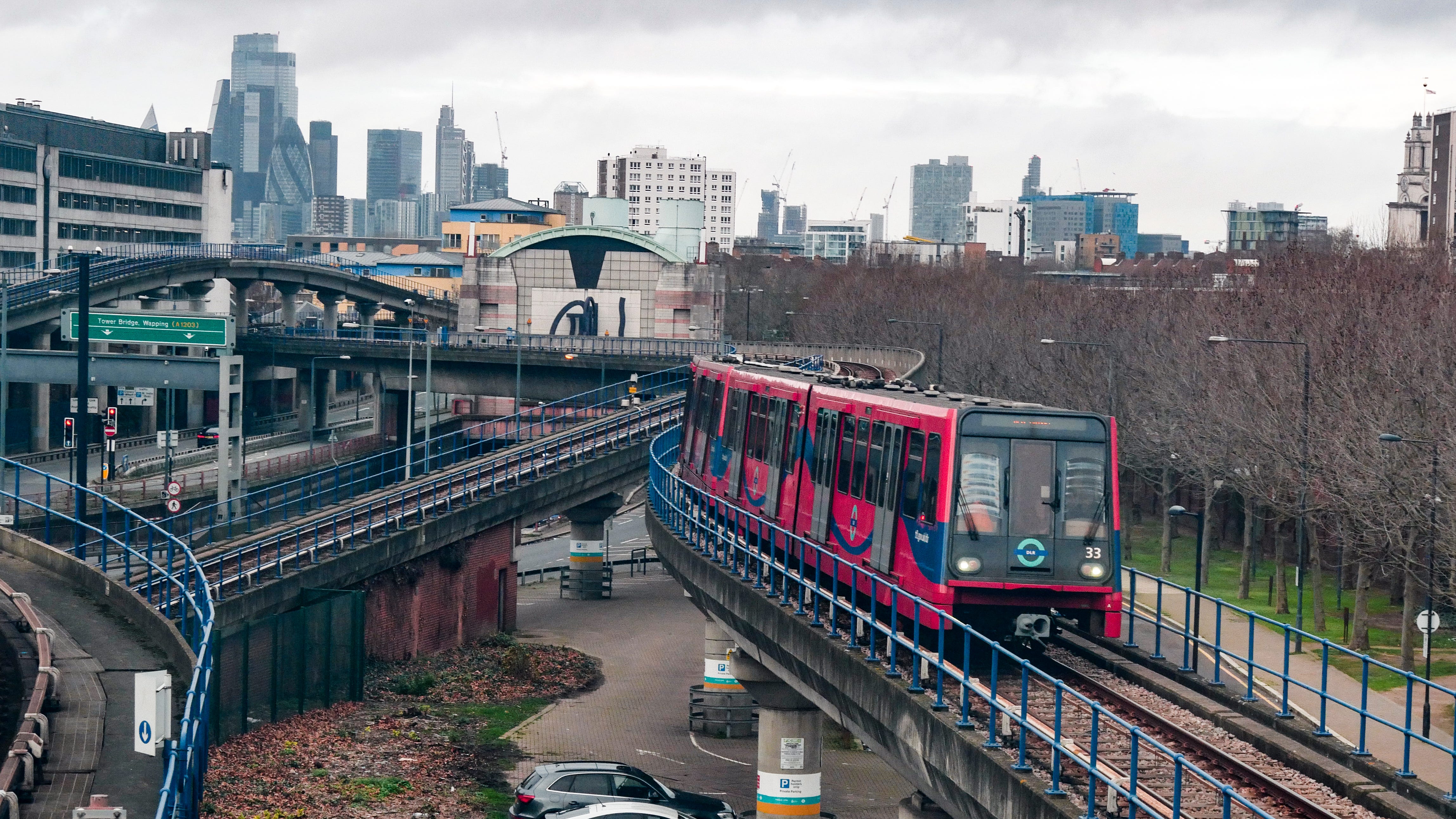
Of all 3 systems, I like tramlink the most. It’s vehicles are sleek, and operation-wise it makes sense. It is a cleaner alternative for buses, and the platform infrastructure required is minimal due to the trams’ low-floor design. More importantly it feels right in place for a street setting. That said it is the newest of the bunch.
The DLR is called a light rail but it runs on quite an expensive set of instructure, and at that point we might as well run a conventional heavy rail system with 1–2 coaches, with the potential to add more coaches in the future.
Hong Kong’s LRT encounters the same dilema as the DLR, and on top of that, it is considered by many a worse solution than the buses it was meant to replace. Of all 3 systems, I think it is the worst thought-out, as the system occupies quite a bit of road infrastructure, but fails to blend into a street setting gracefully.
A quick comparison on train interiors
Considering that all heavy rail services in Hong Kong are rapid transit style, it’s natural to compare it to London’s underground. For those accustomed to travelling on London’s “tube”, you might be slightly surprised to find that Hong Kong’s trains better resemble something like a TfL rail, overground or LU subsurface (Circle, Metropolitan, District, Hammersmith and City Line) service. The reasons for that are:
- Hong Kong’s system itself is not as ancient as London’s underground, so the infrastructure is designed to accomodate larger trains with a greater passenger capacity.
- Walkthrough gangways between carriages have been here for quite a while and I’m not quite sure why this hasn’t been implemented on the London Underground until the recent S stock.
- Air conditioning was implemented since electrification. In contrast, only the S stock has air conditioning, and it looks like a big challenge to implement AC in the deep level tube lines, considering the constraints on ventilation and the outdated electrical mains.
All in all, this contributes to a more spacious, comfortable (but arguably “clinically feeling”) look for Hong Kong’s carriage interiors. Nevertheless this is the trend all train manufacturers are adopting today, for practicality concerns.
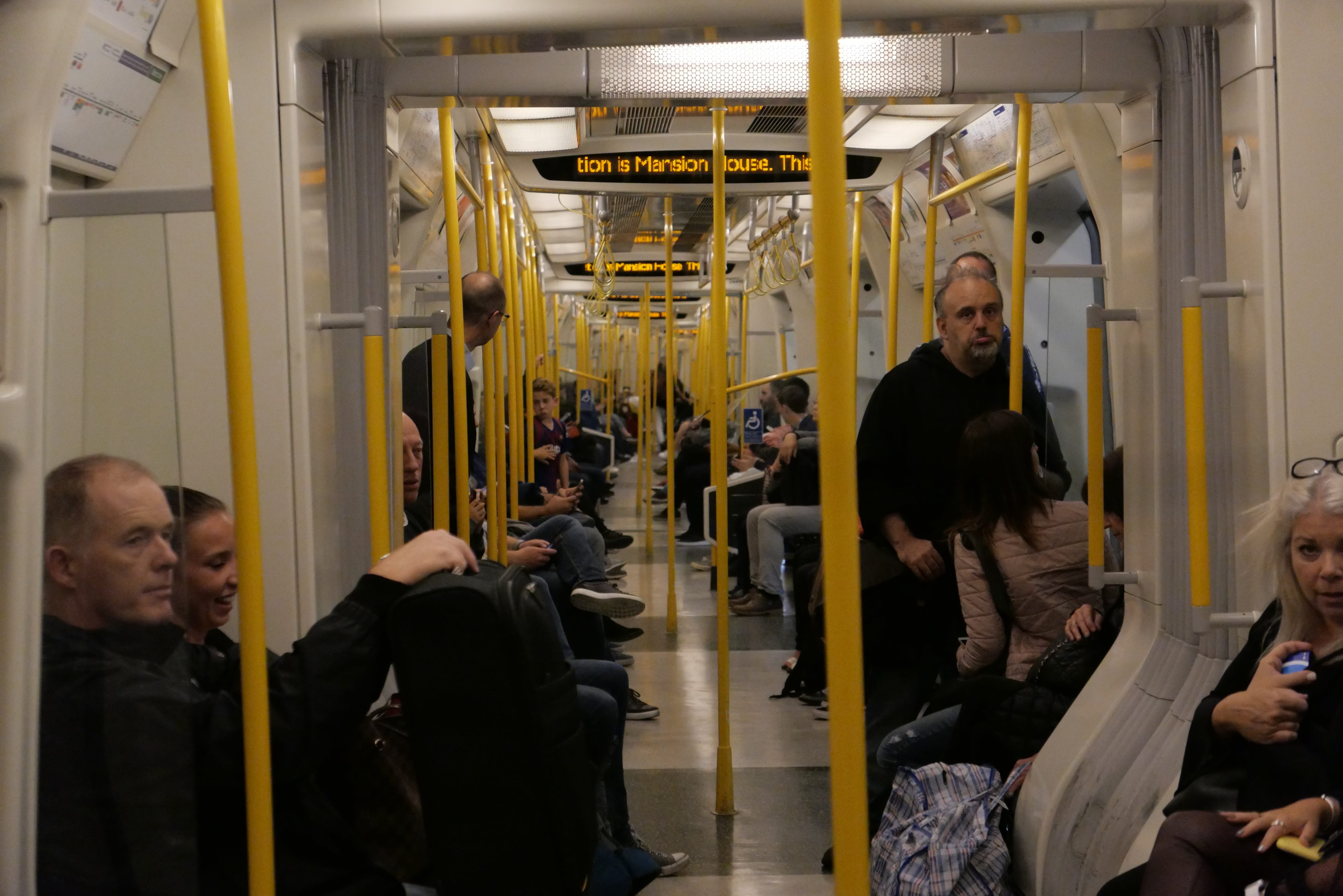
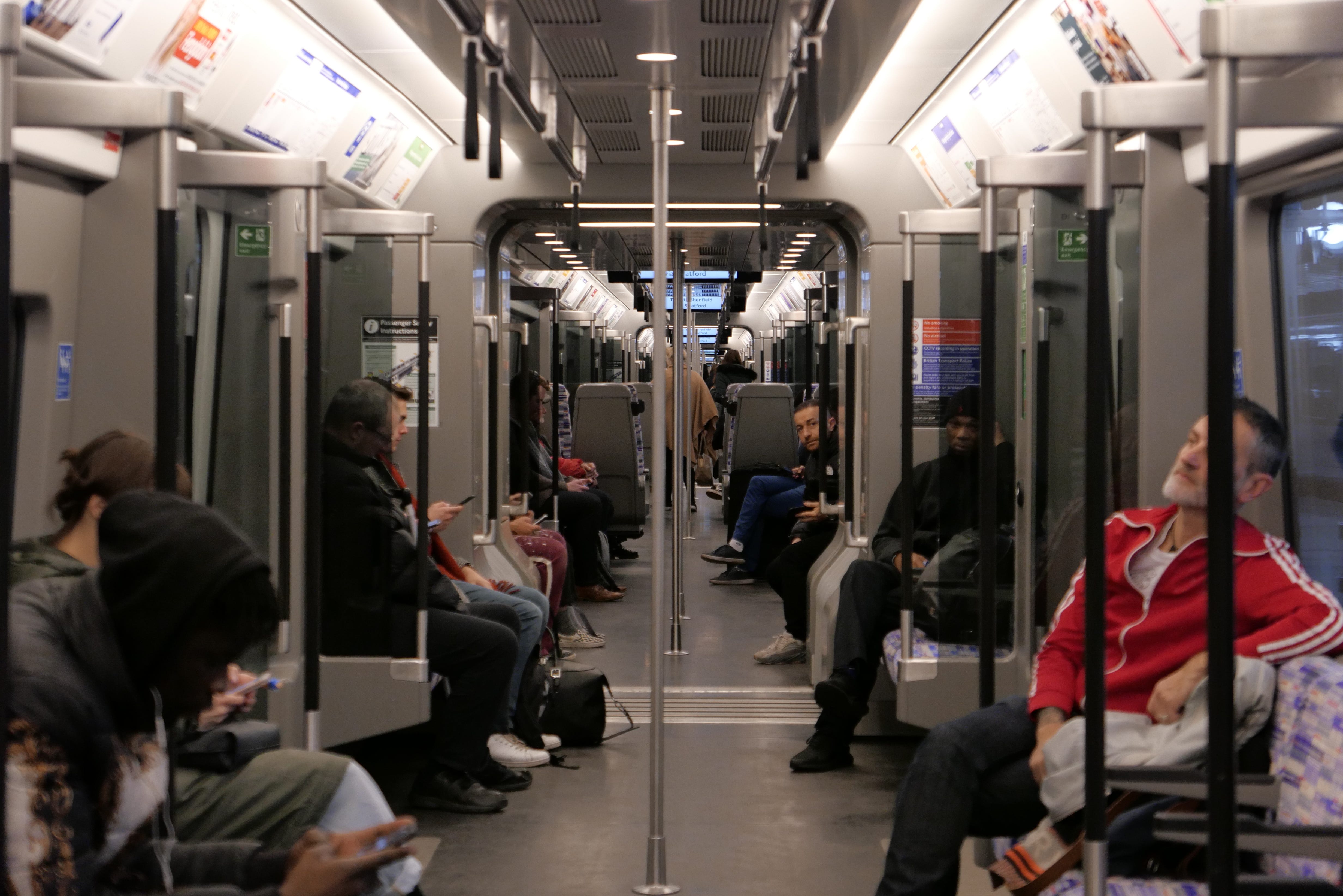
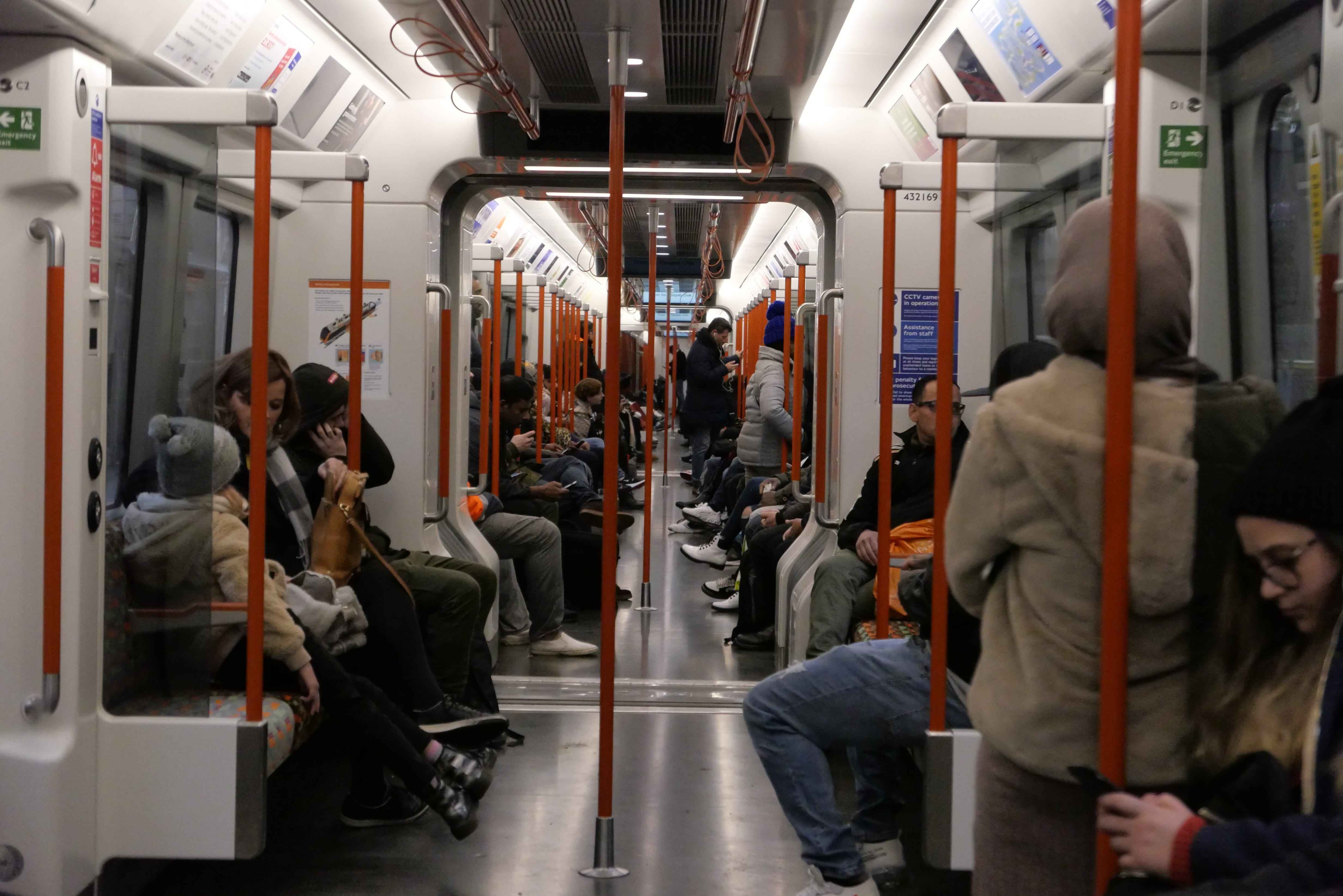
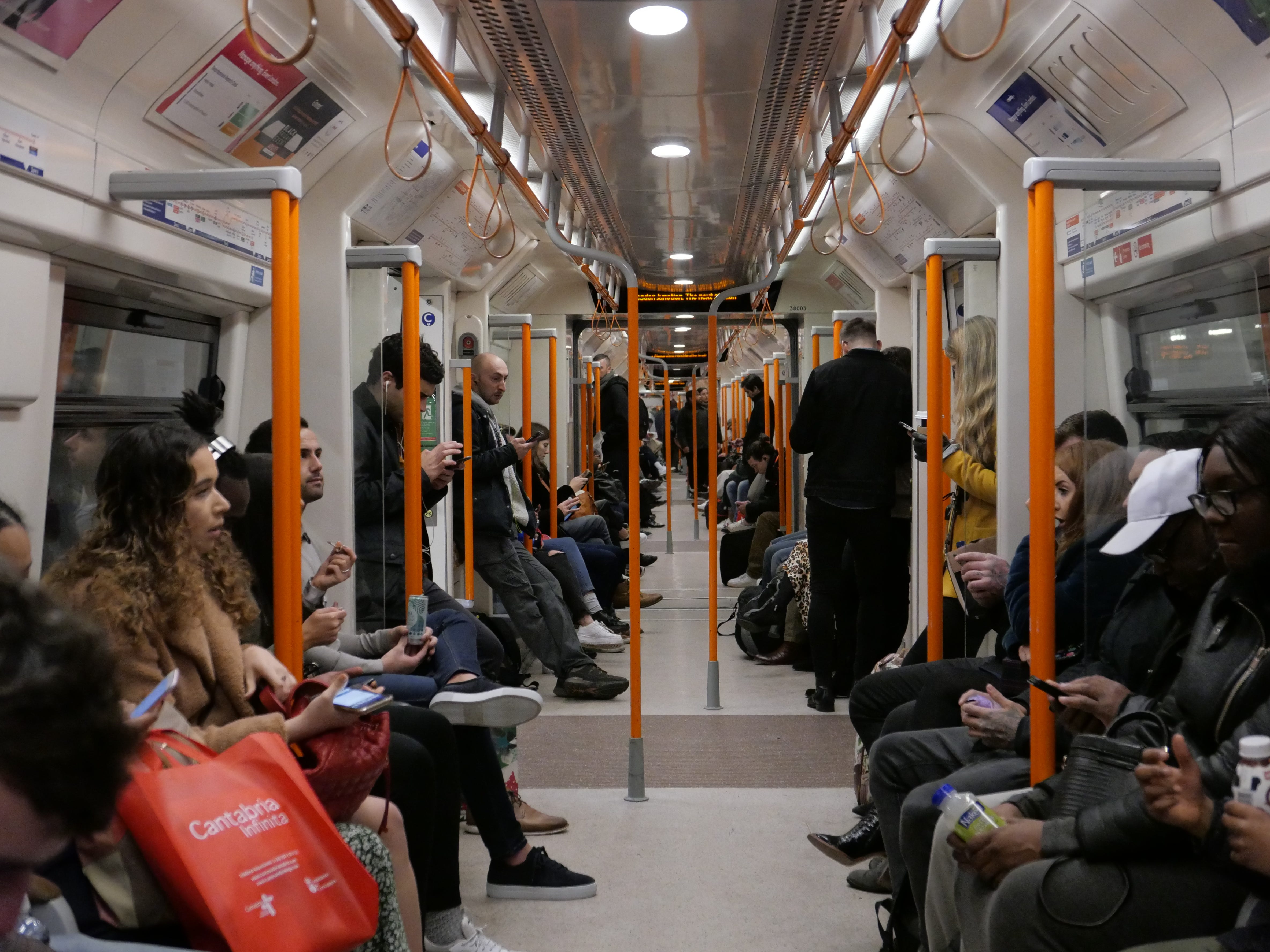
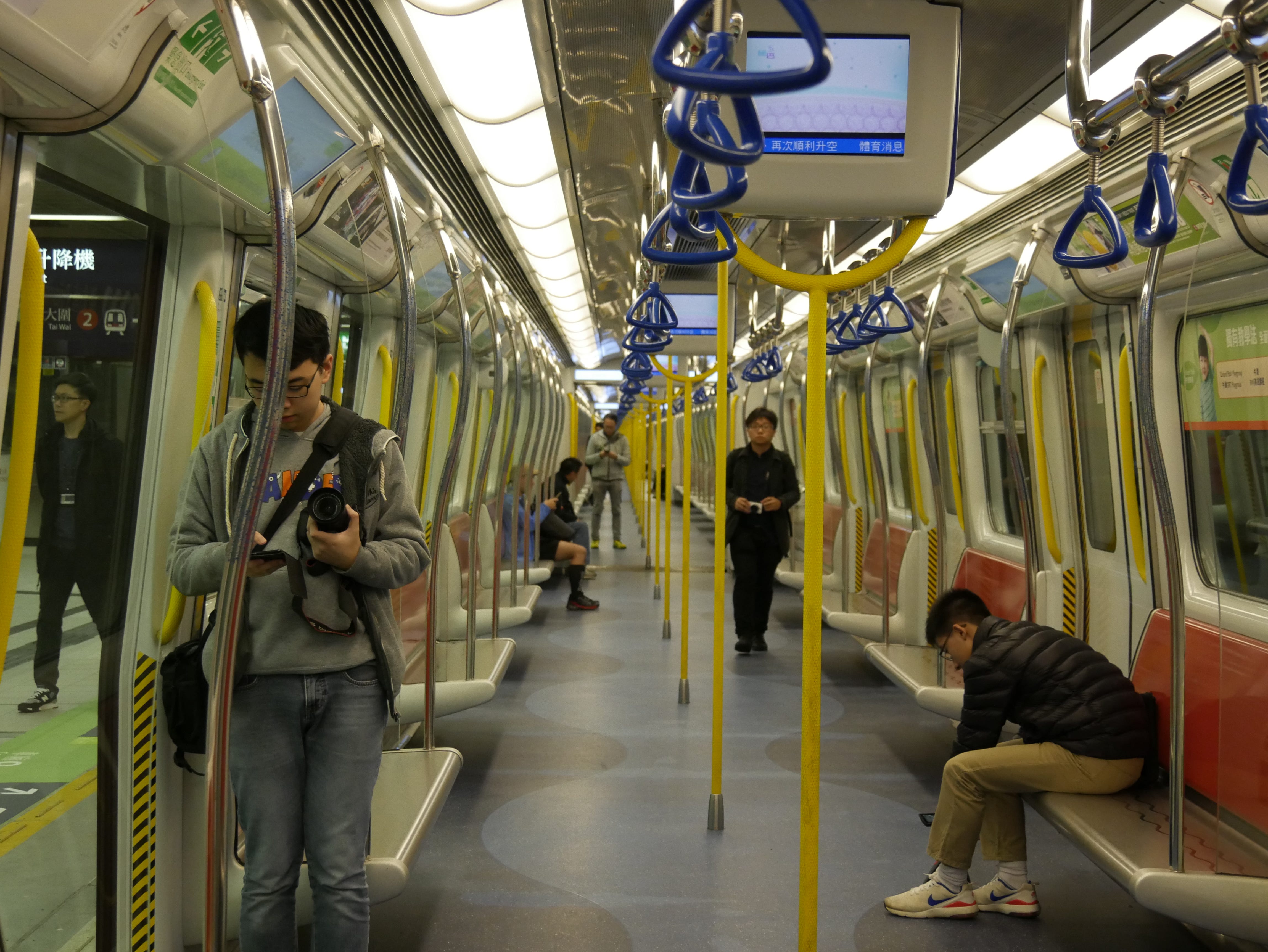
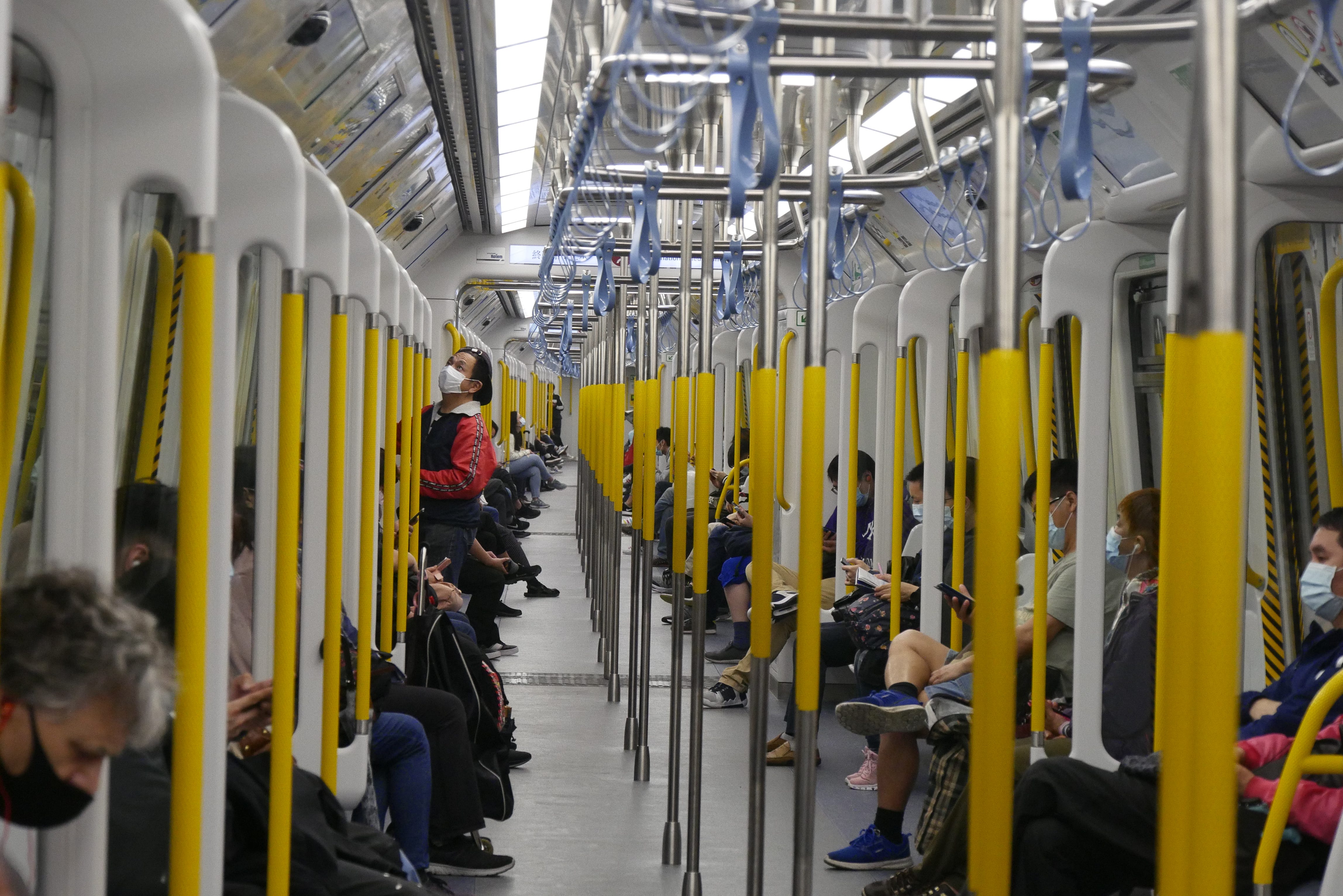
One striking similarity you might see is that R-stock has the same hanging hand-straps as all Class 378 and 700. Apparently they are called TOPADSTRAP and are manufactured by an Austrian company called Faigle. The appearance of the hand-straps is subjective, but personally I think they don’t feel ergonomic. I like the hefty feeling of a conventional metallic hand-strap.
SEAT
Moquettes
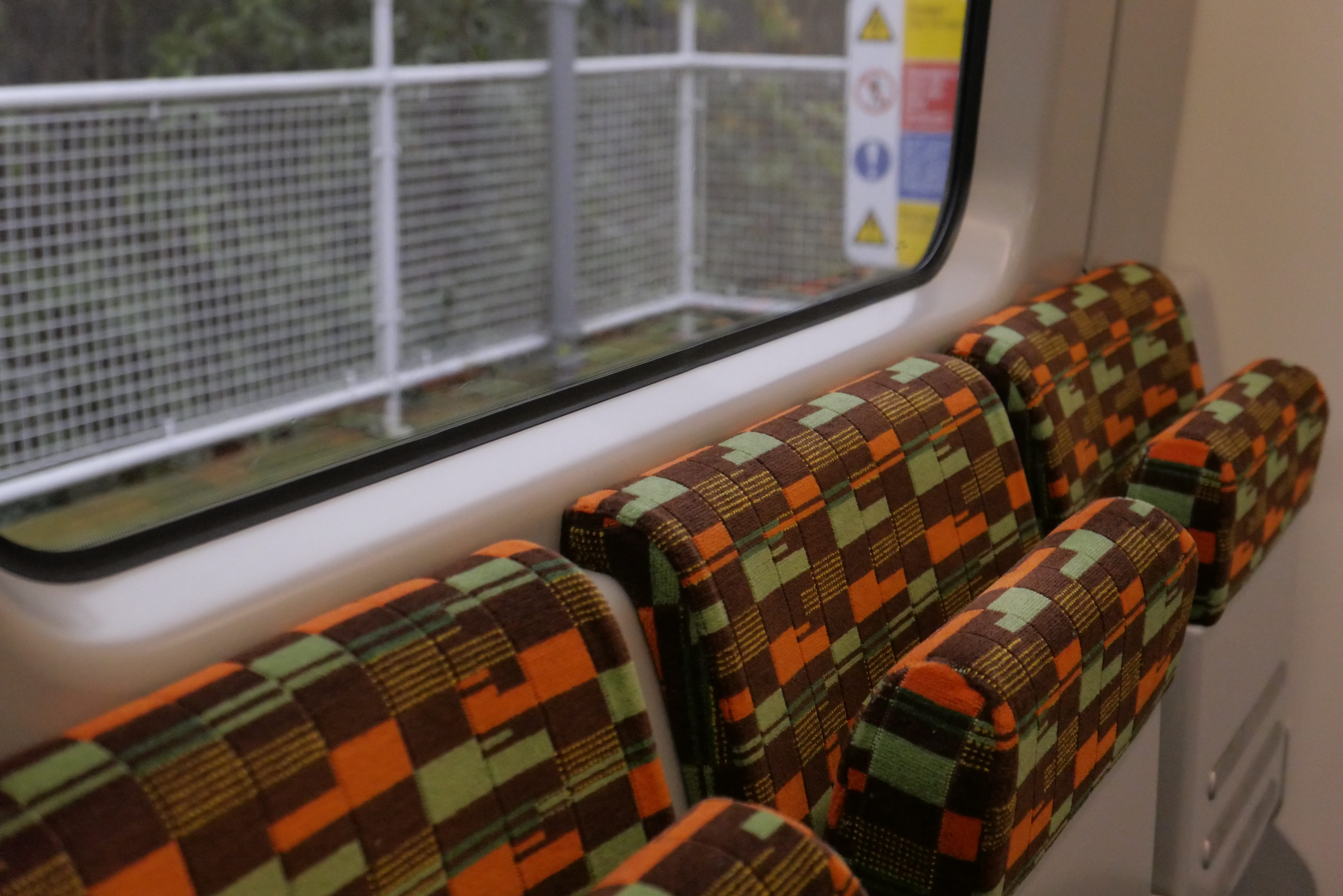
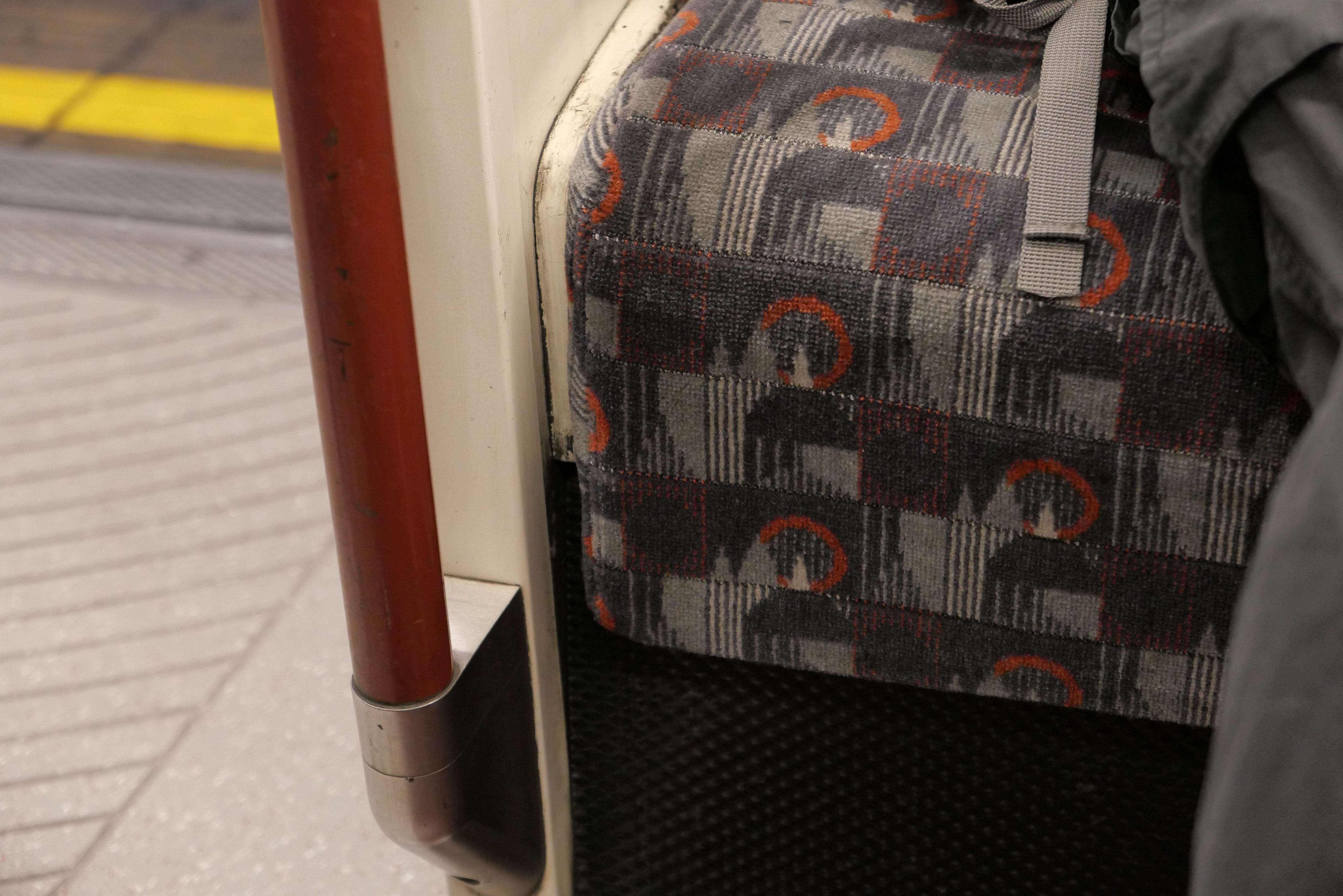
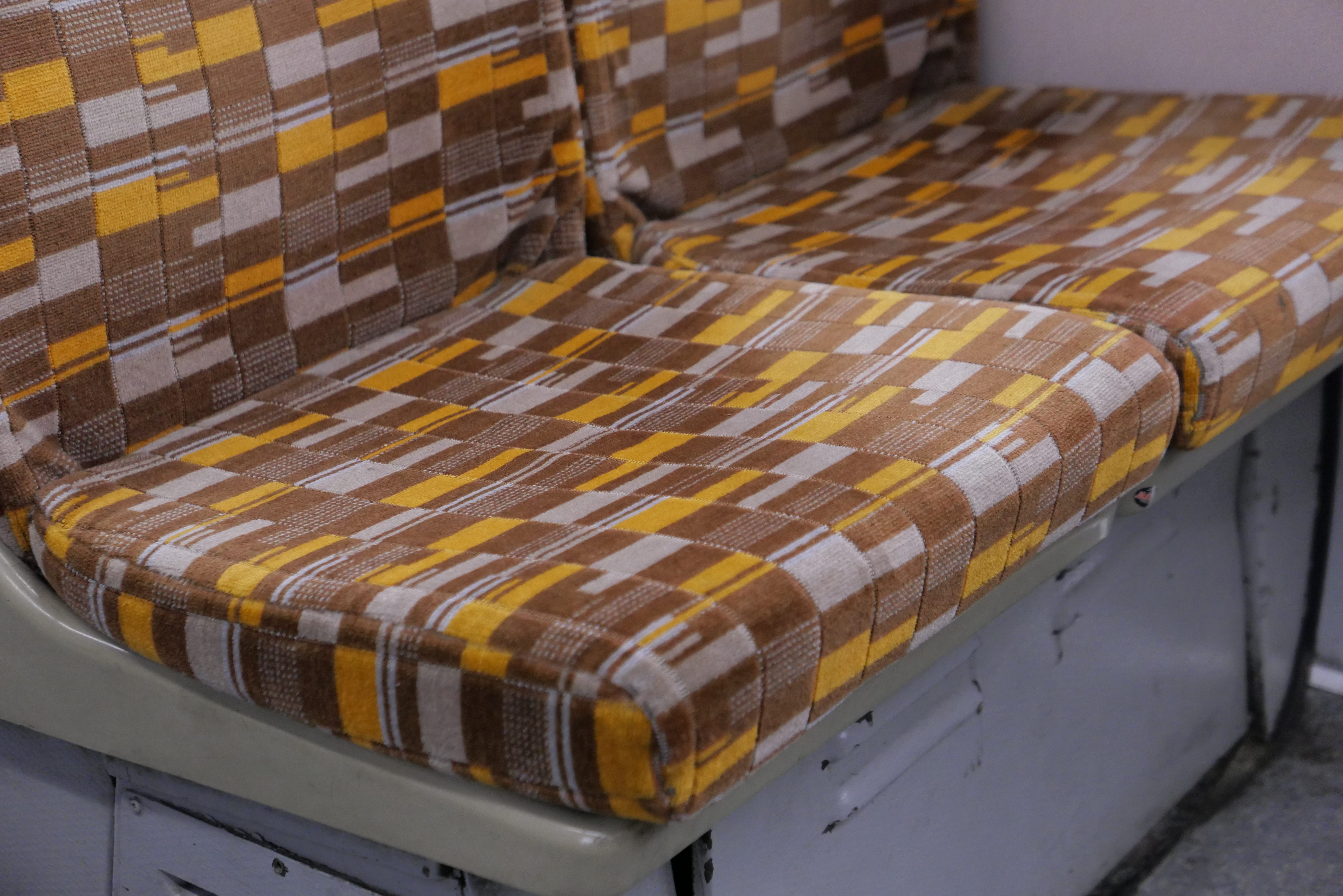
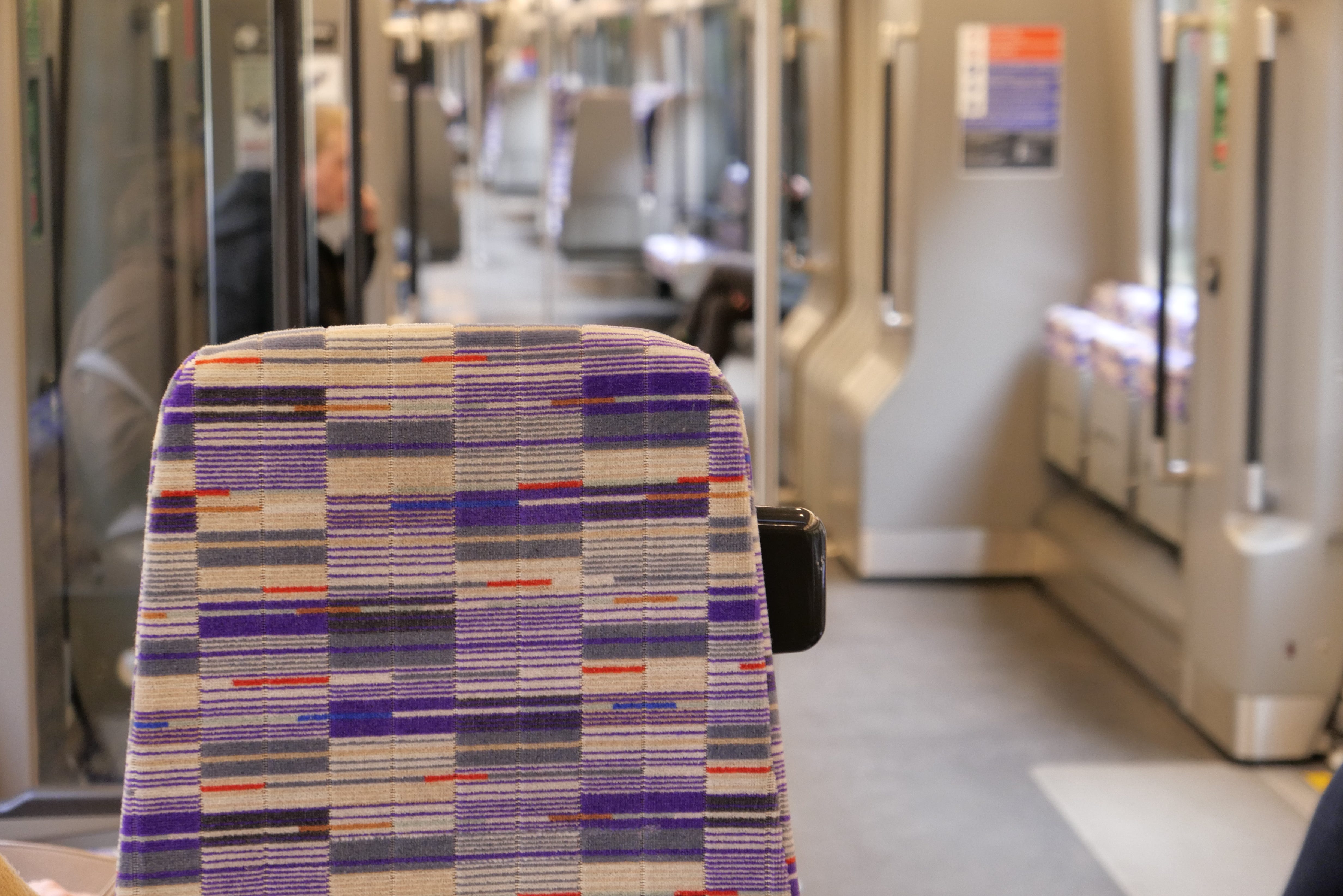
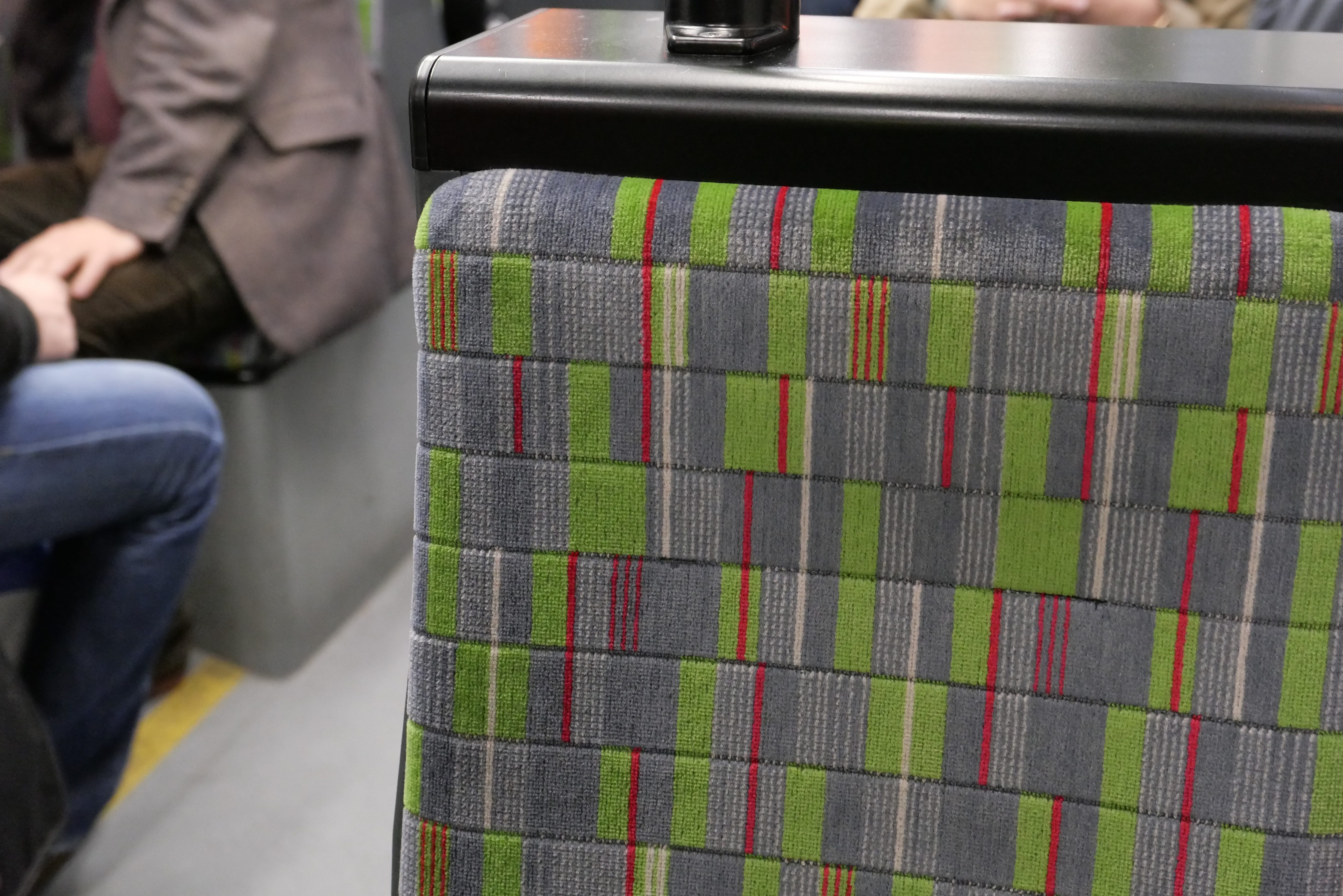
A final aspect of the interior is the seat moquette, which is a feature very unique for TfL, and arguably one of the most exciting aspects of being on a new train. I think the amount of thought that went into designing such a diverse variety of seat moquette patterns is something to be applauded for.
Can you recognise which line/ train each moquette corresponds to?
In contrast, we are stuck with cold metallic seats in Hong Kong, due to our hot and humid weather for the best part of the year. It’s feels boring but its pragmatic.
Summary
Not much to summarise to be fair, considering that so much has been covered in this story. That said, this story is merely a collection of my trainspotting shots accompanied with some fancy descriptions.
Aside from the system’s rolling stock, there’s quite a lot of discussions that can be made on the system’s history, intricate design elements like cross-platform interchanges, and its connections with China (like the cross border trains and highly controversial high speed train extension).
If you’ve read till the very end of this story, thank you. Otherwise, thank you as well!
